
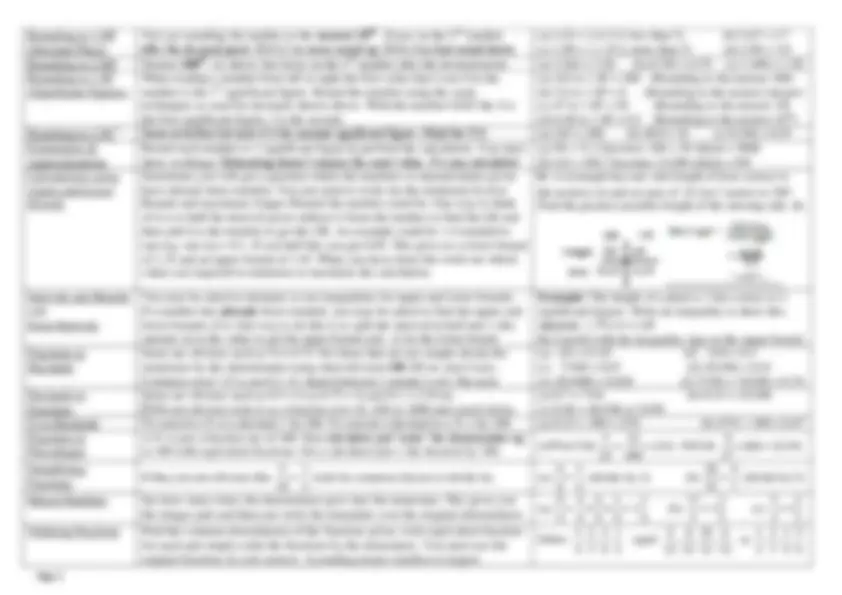
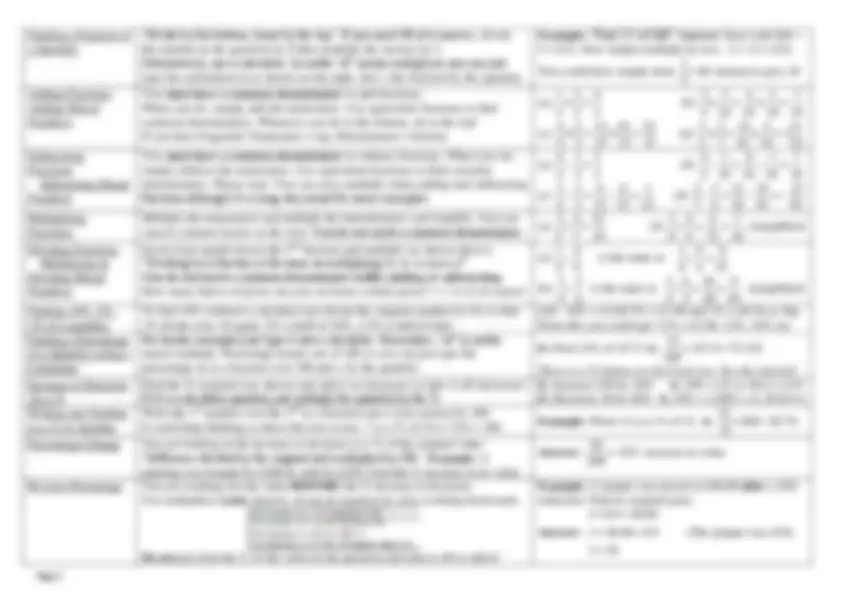
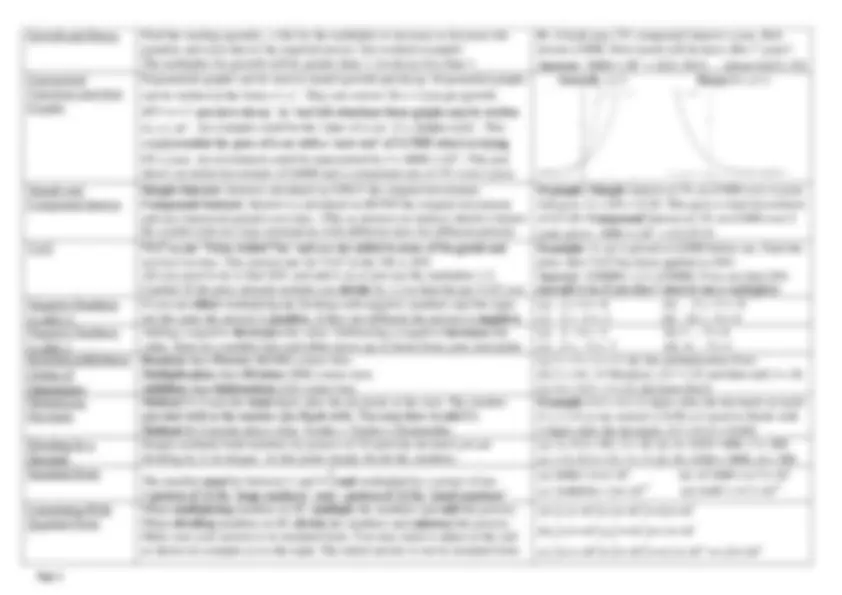
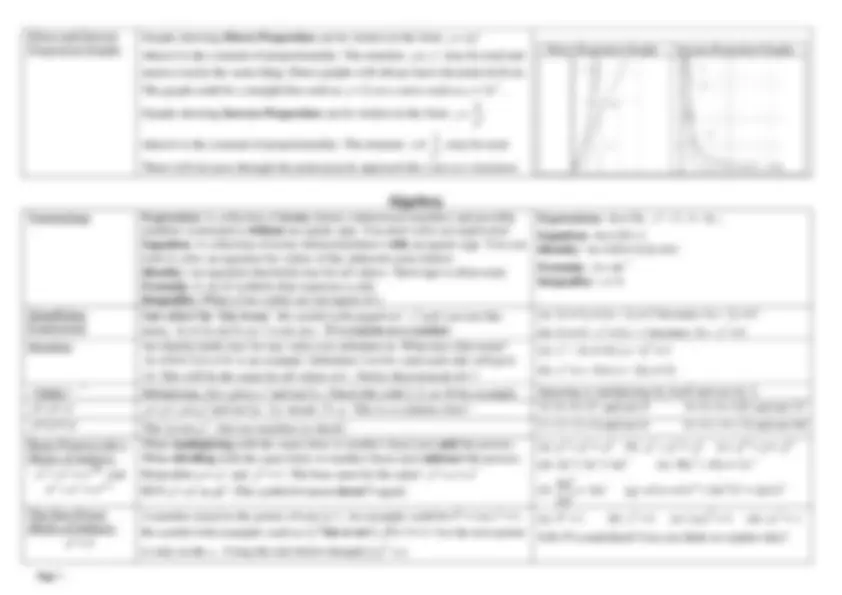
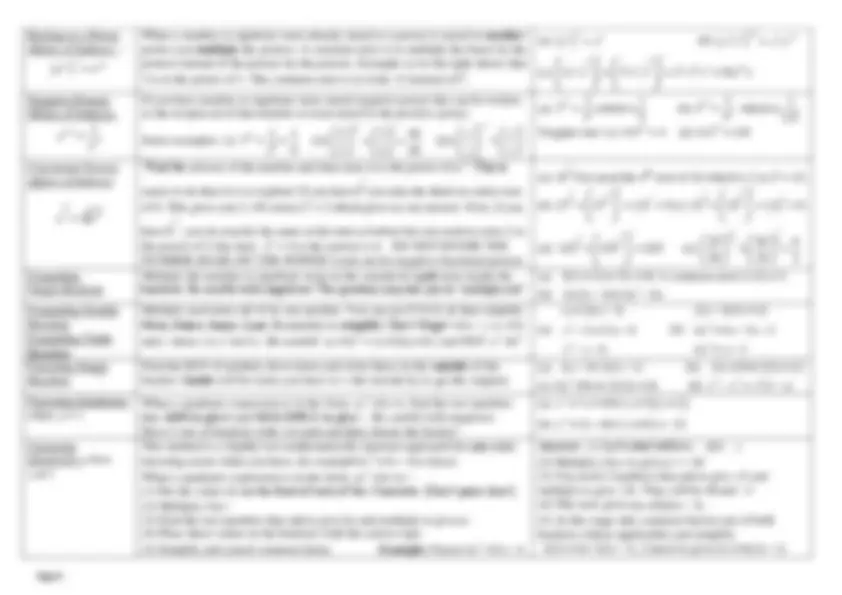
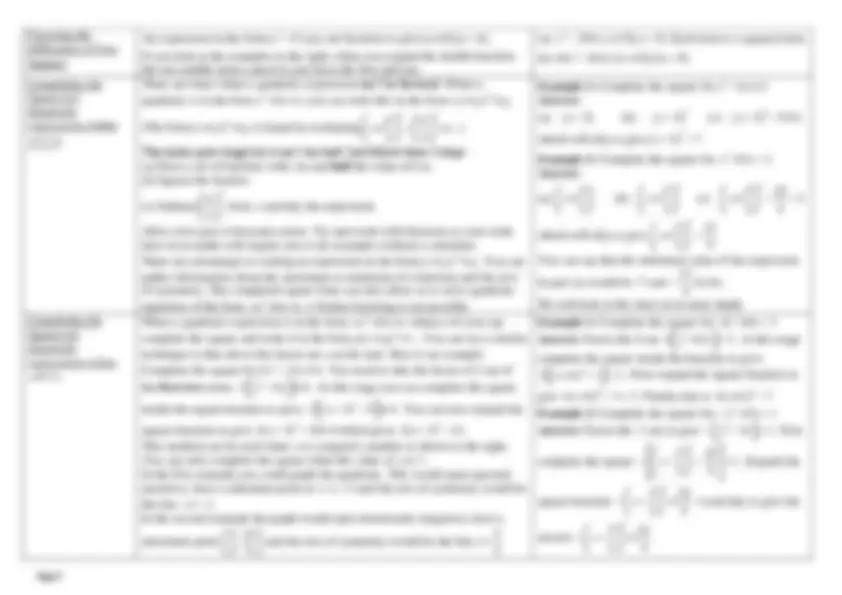
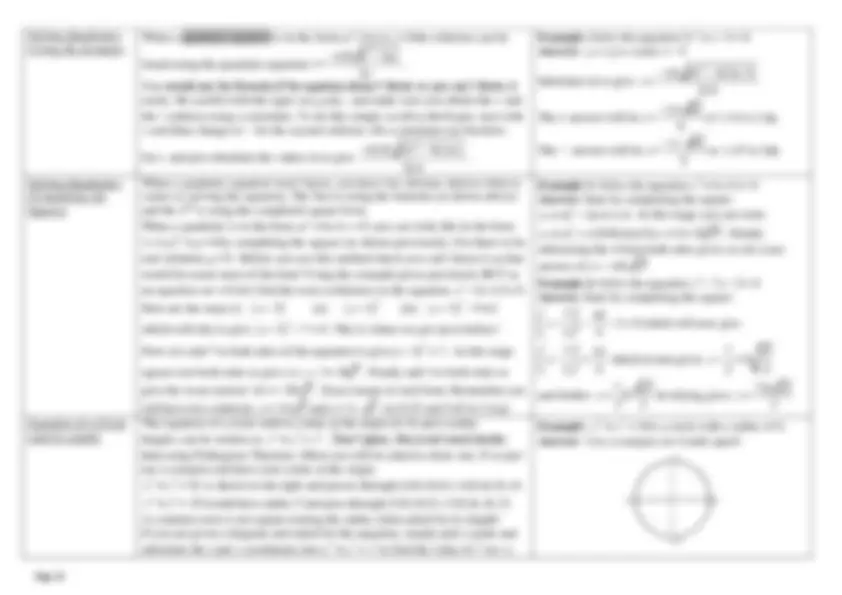
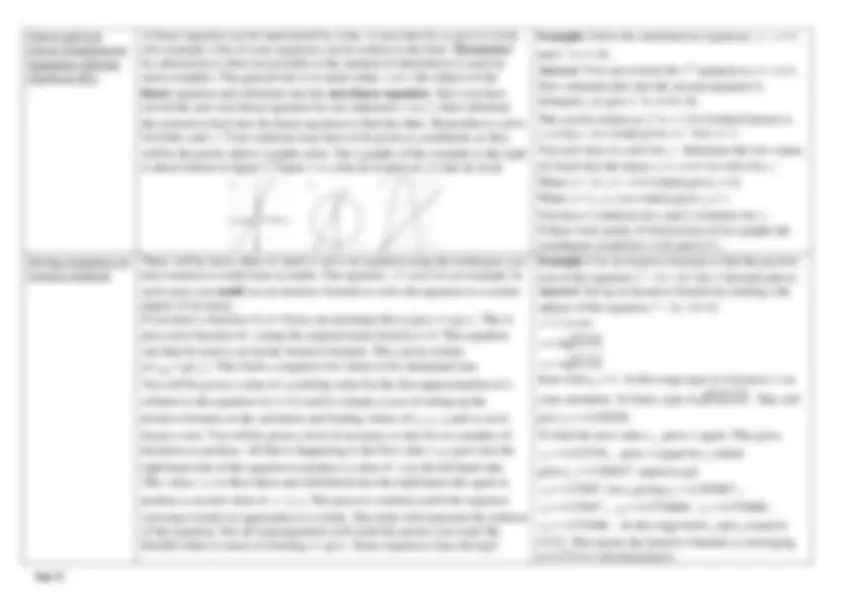

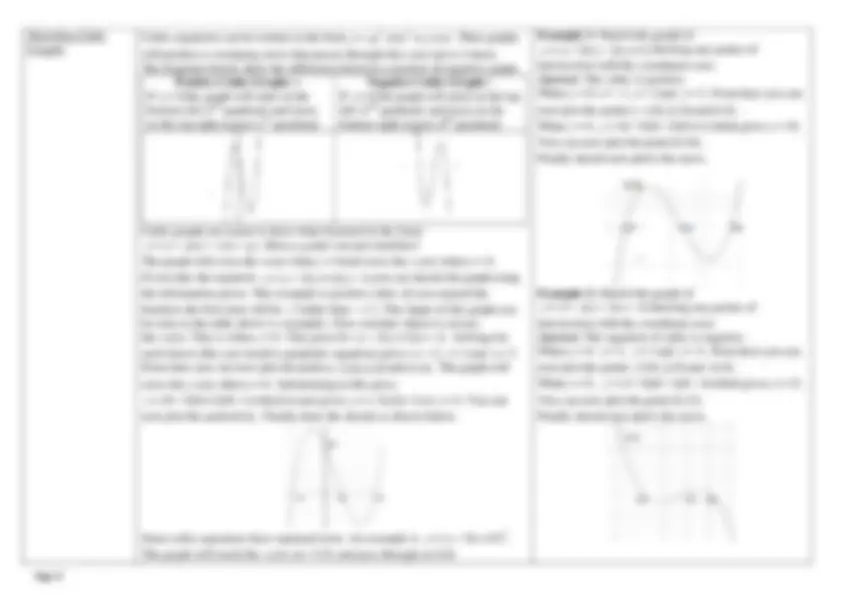
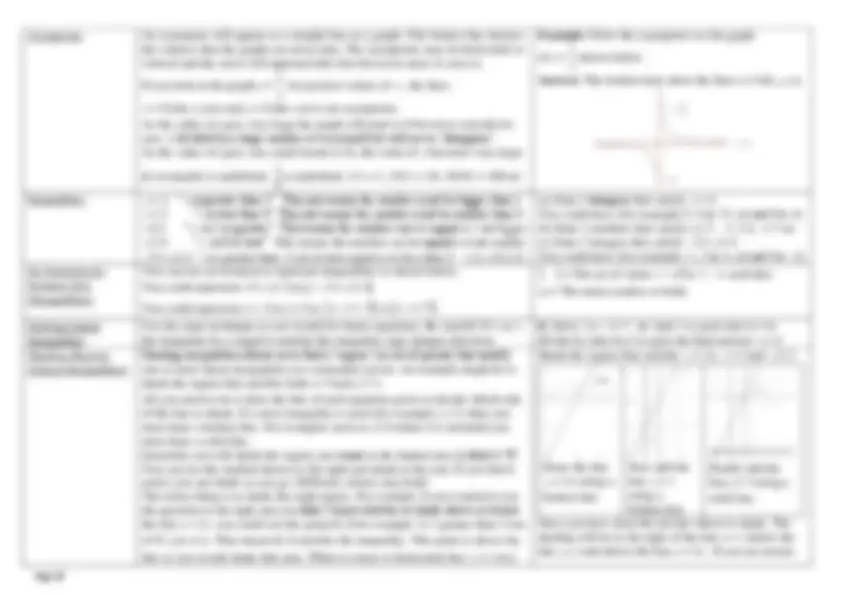
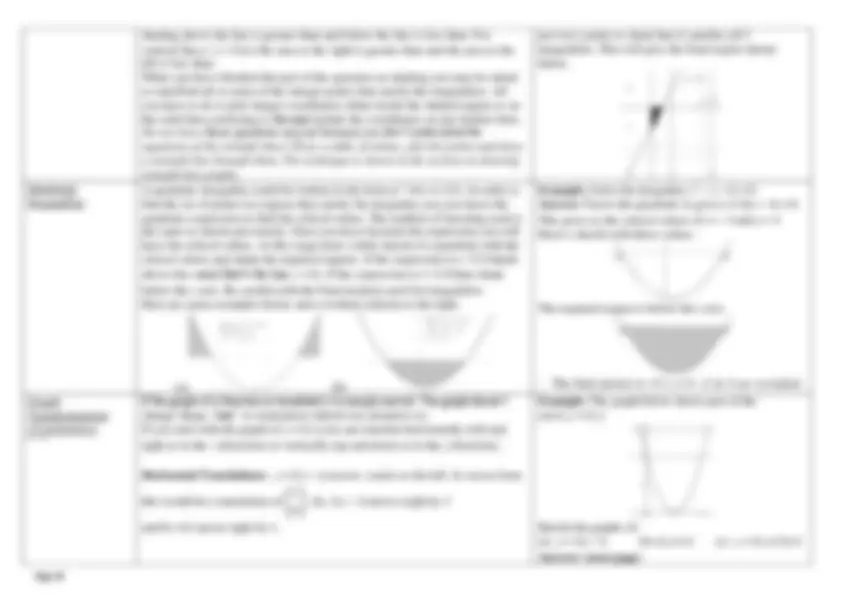
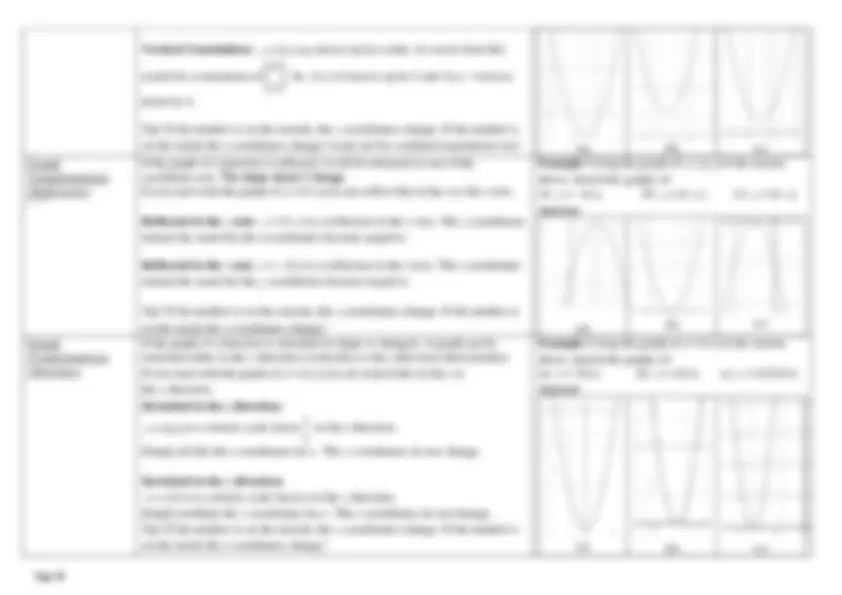
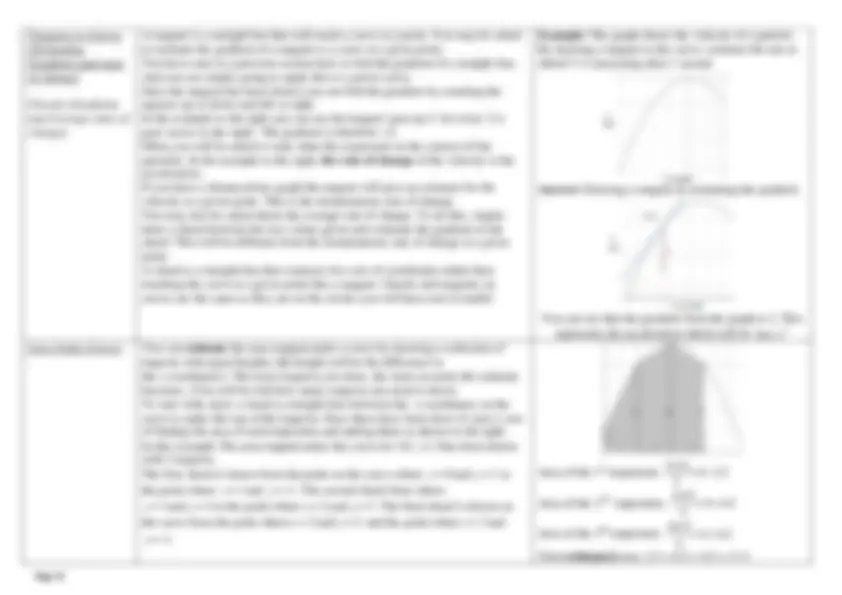
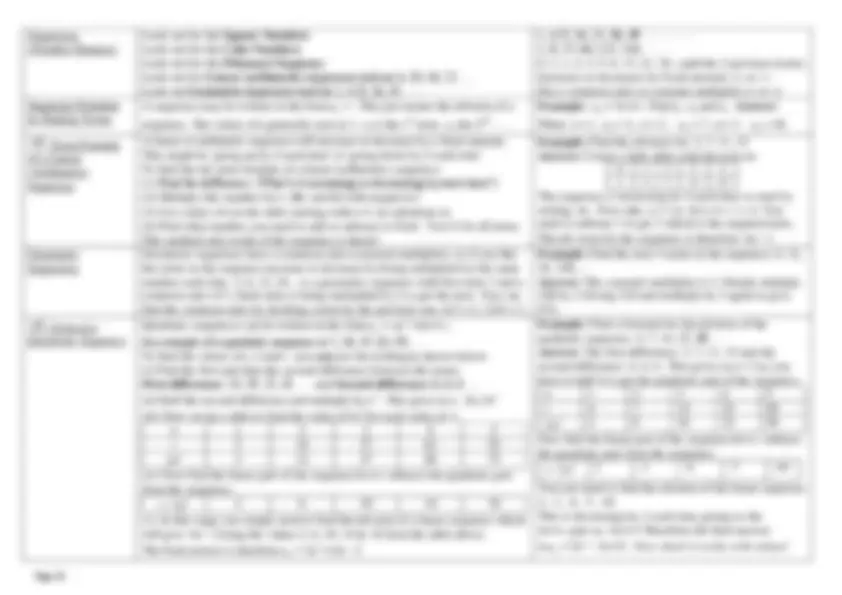
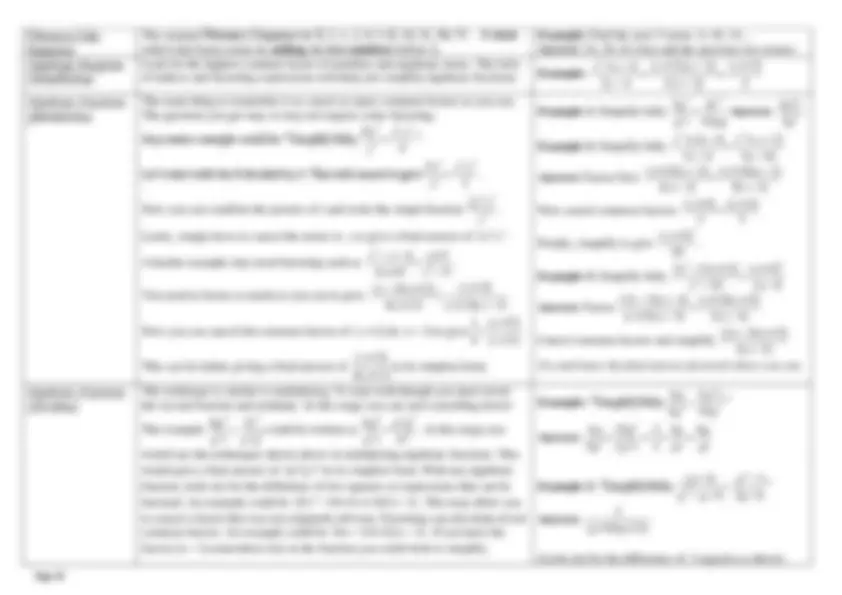
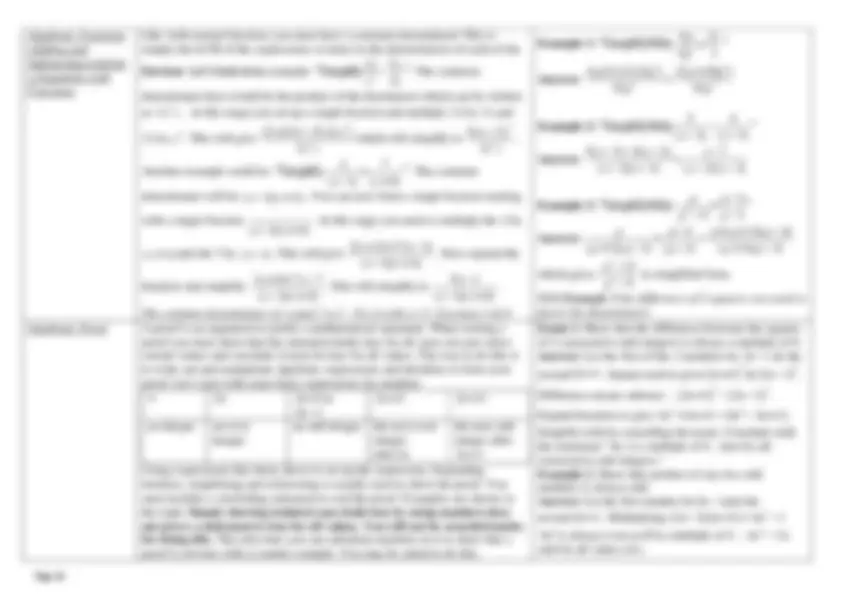
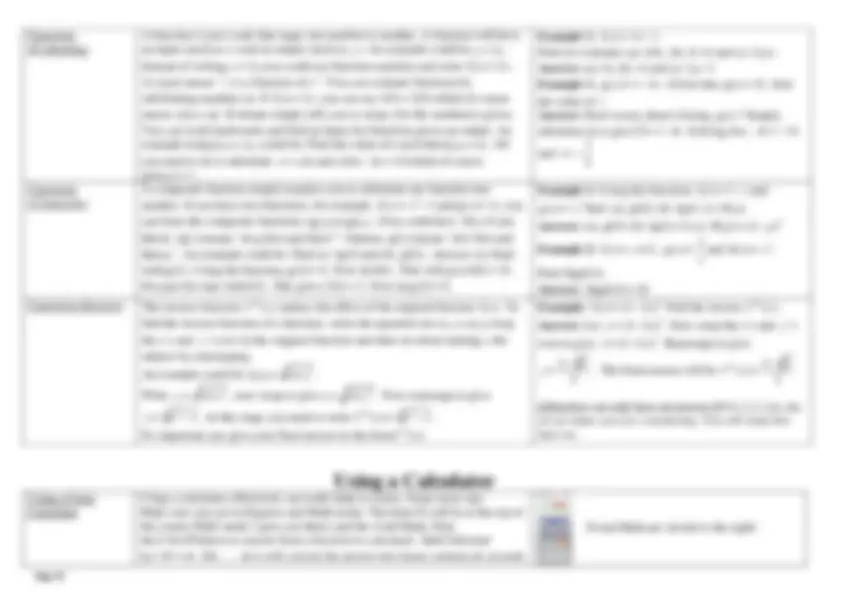
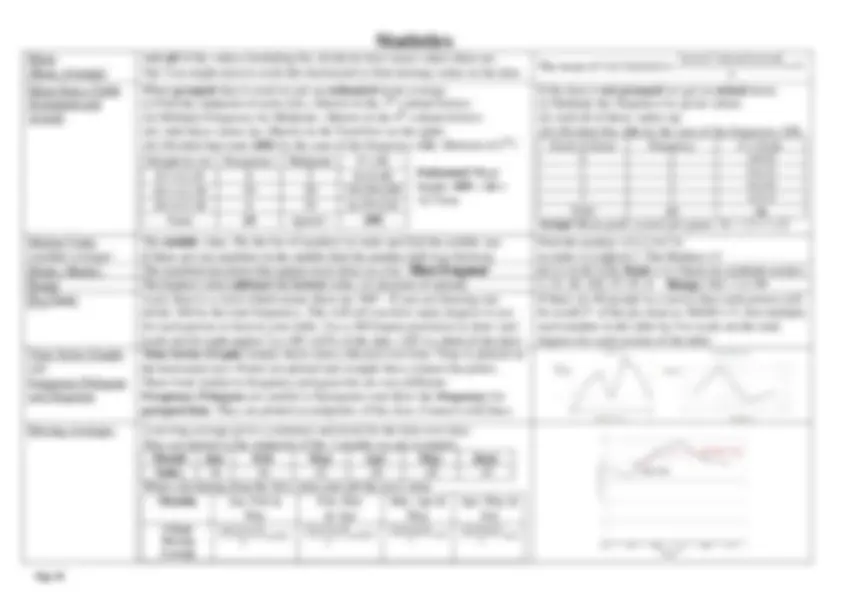
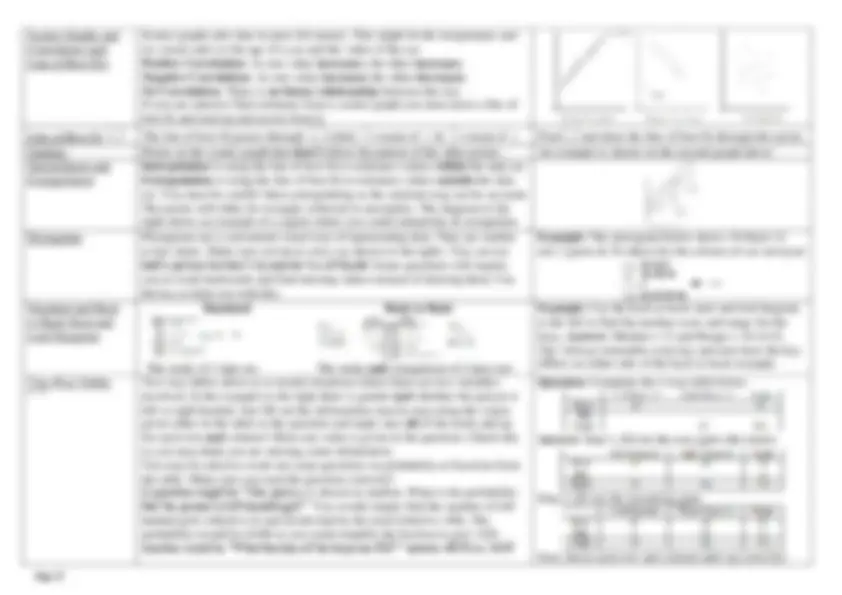
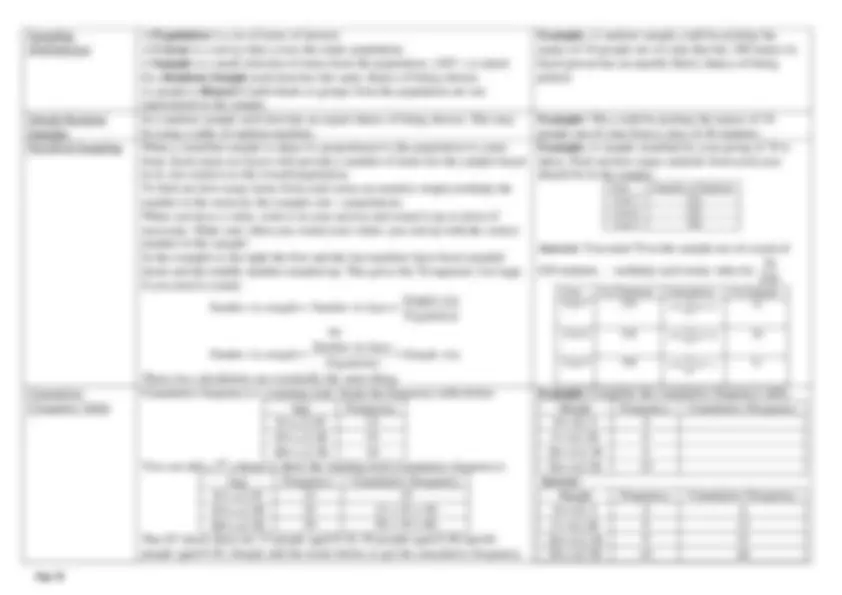
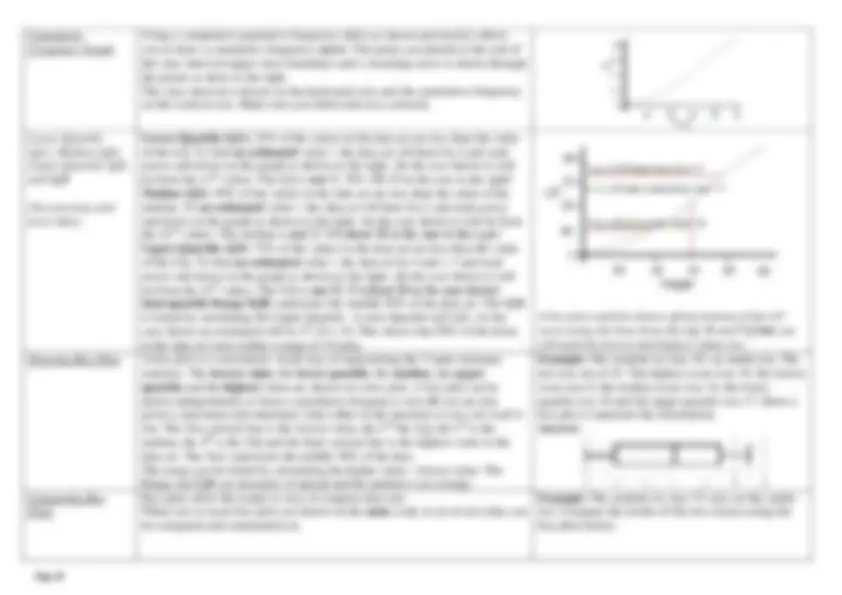
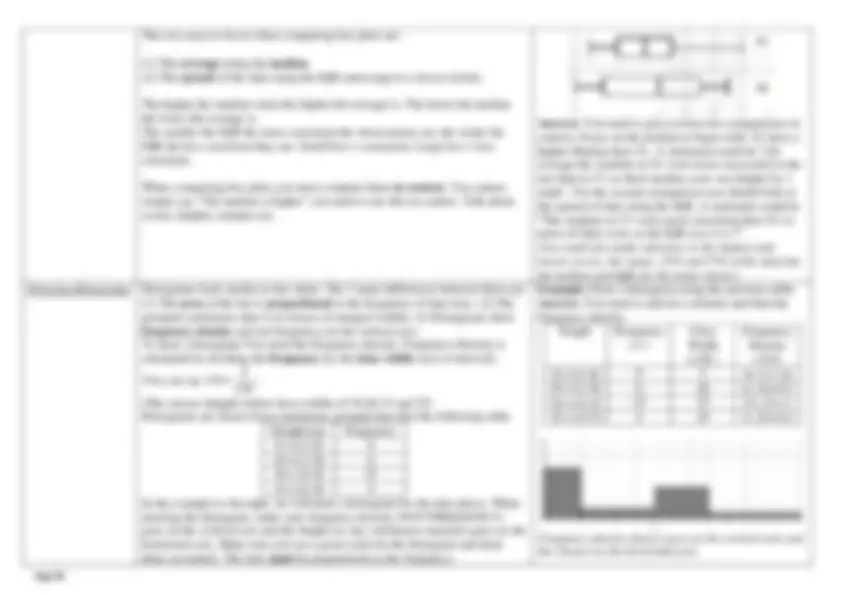
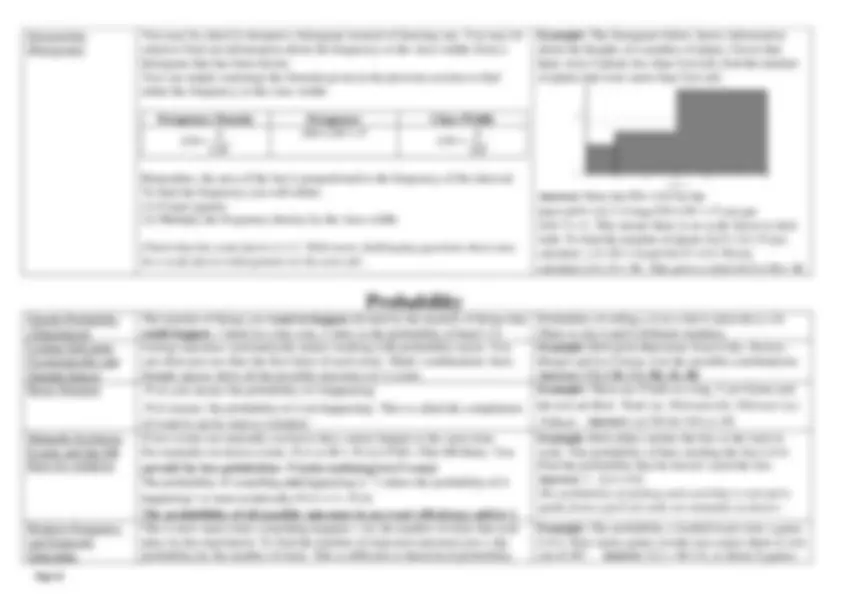
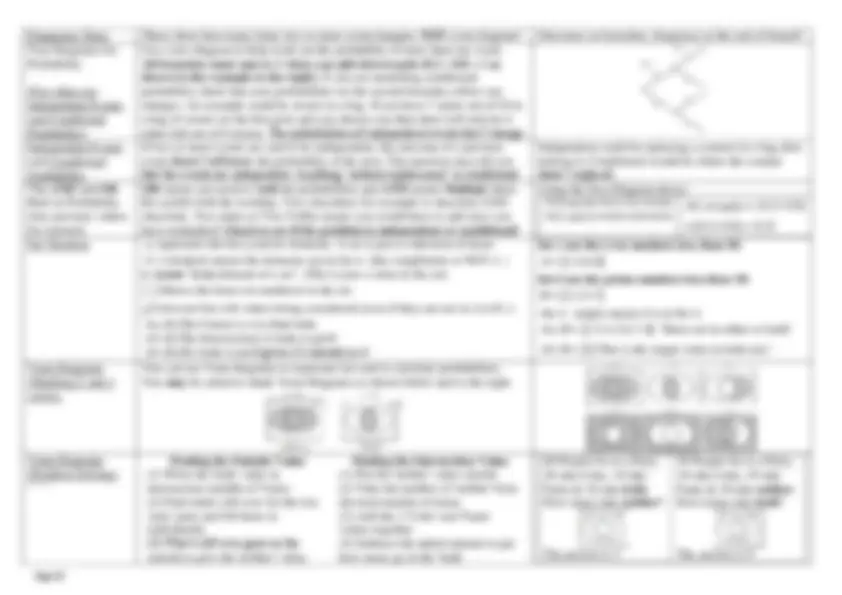
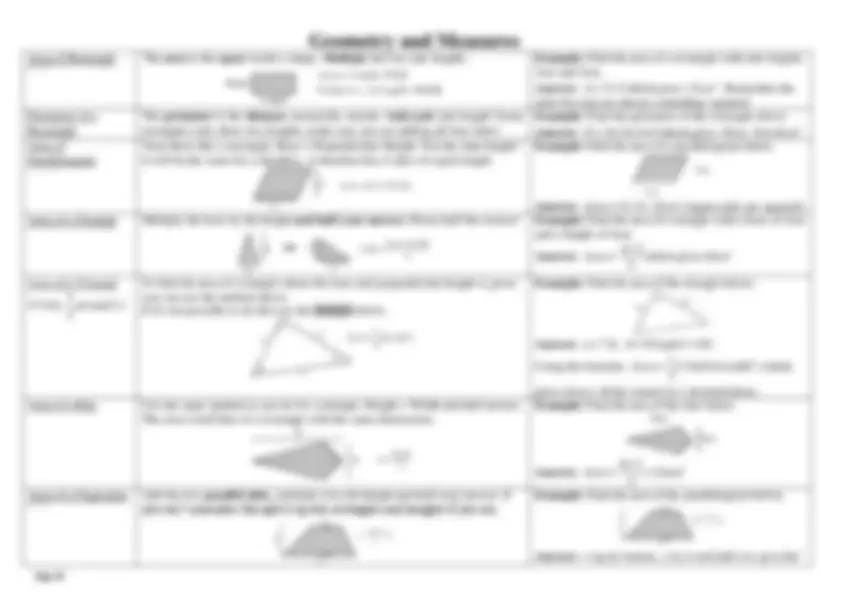
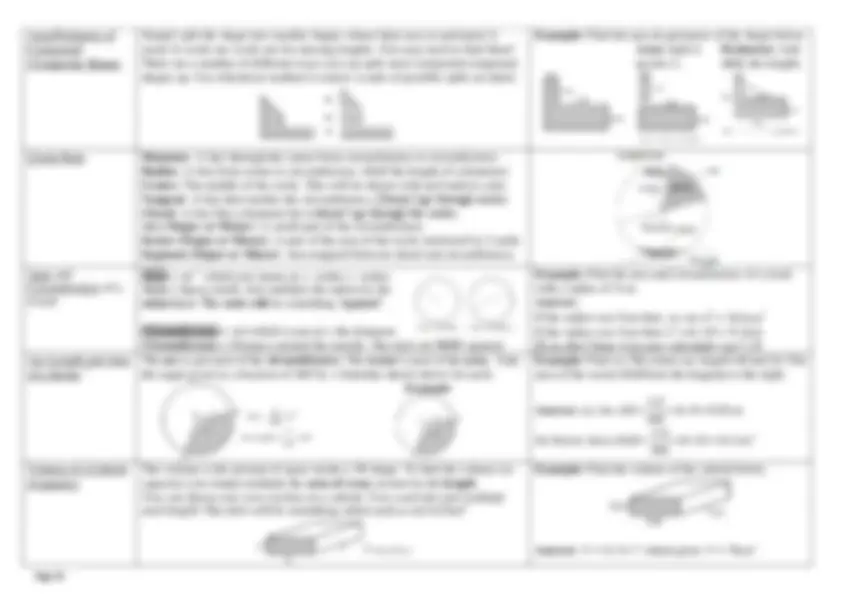
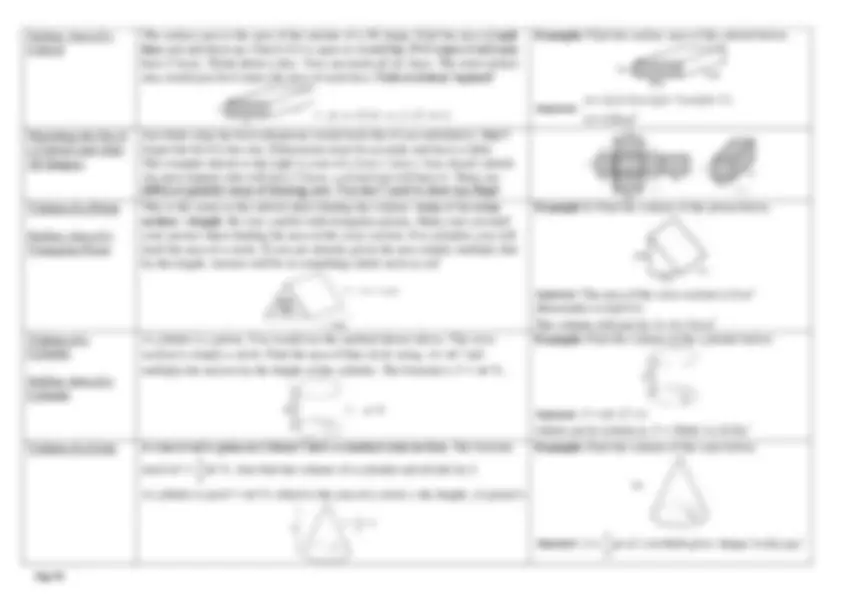
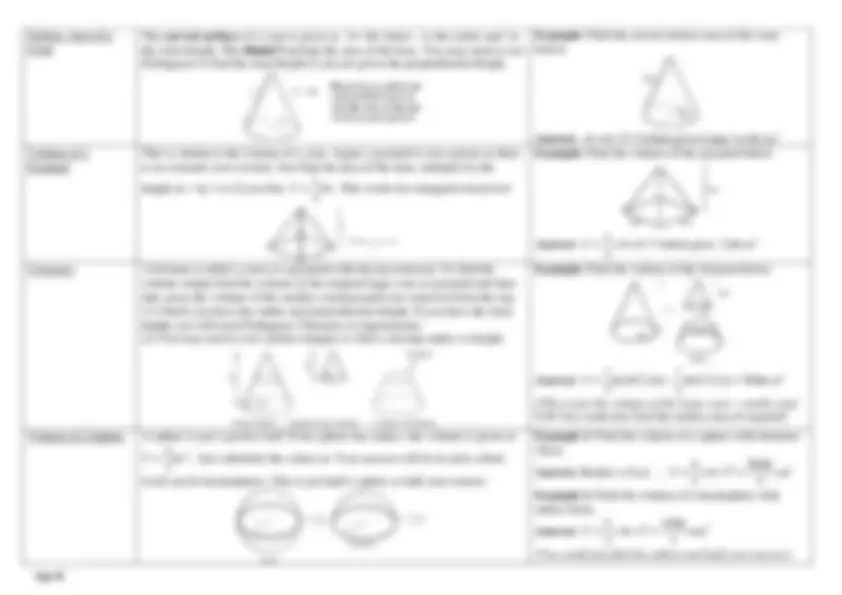
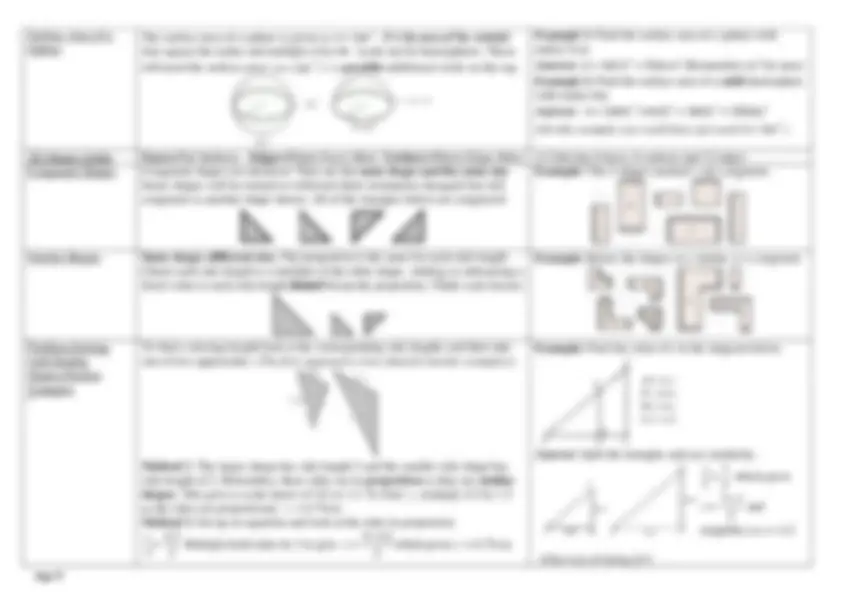
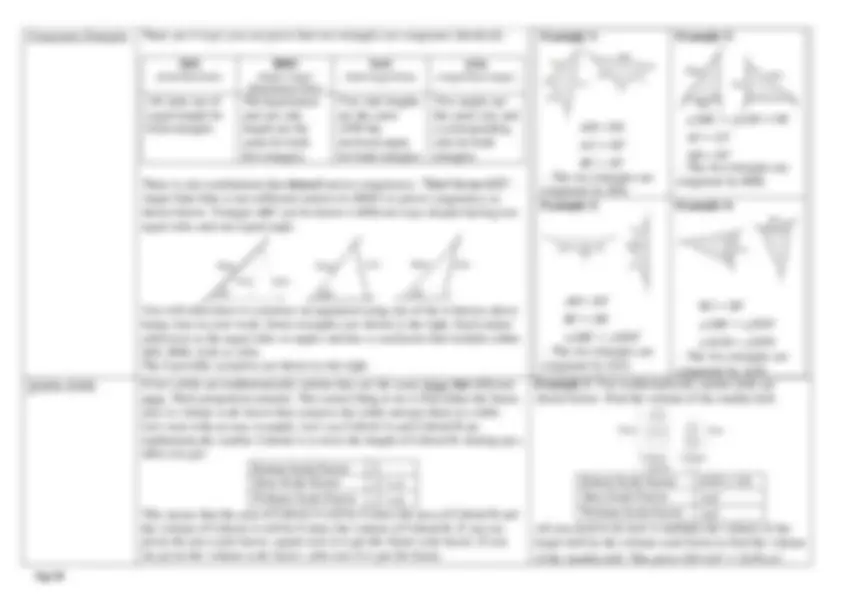
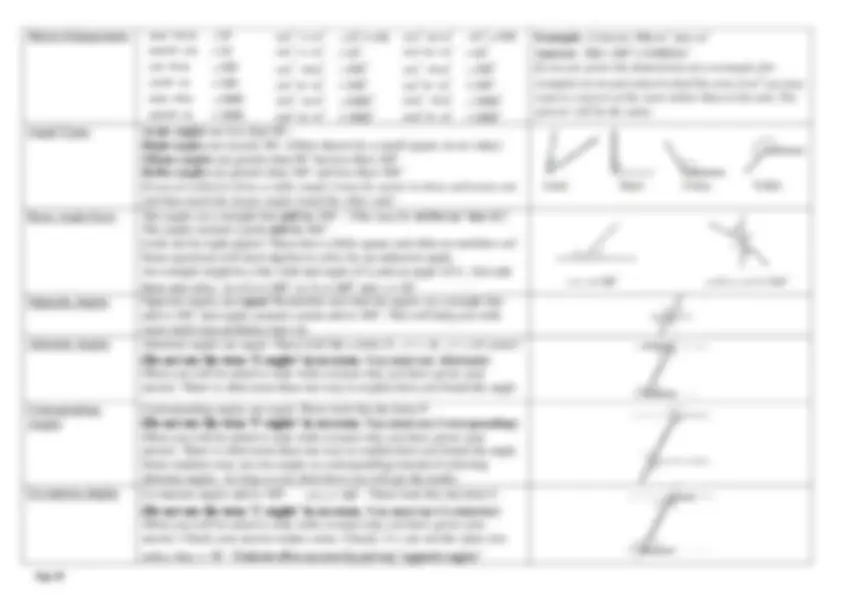
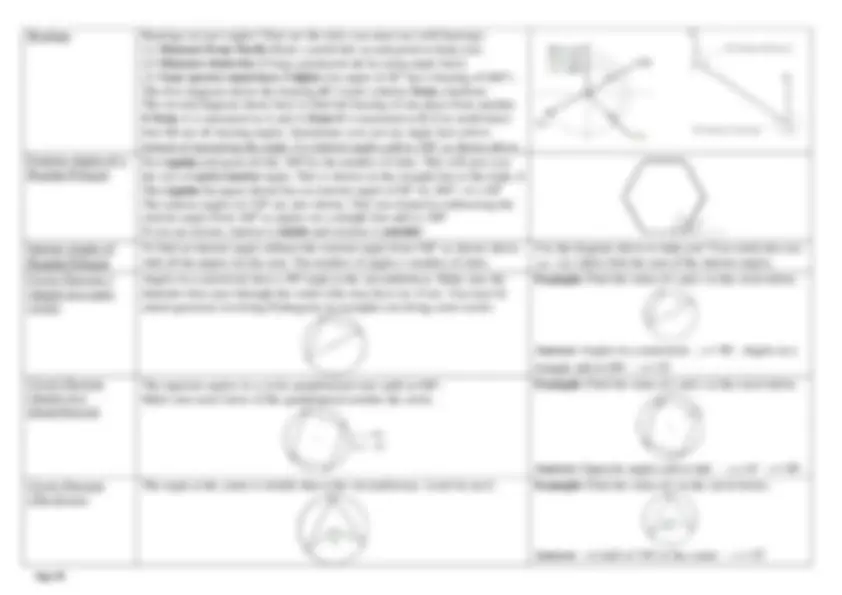
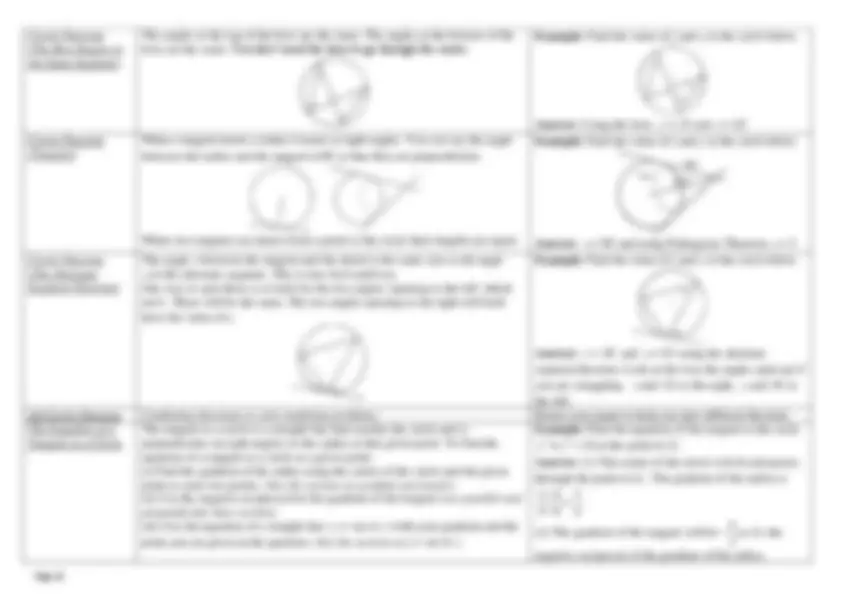
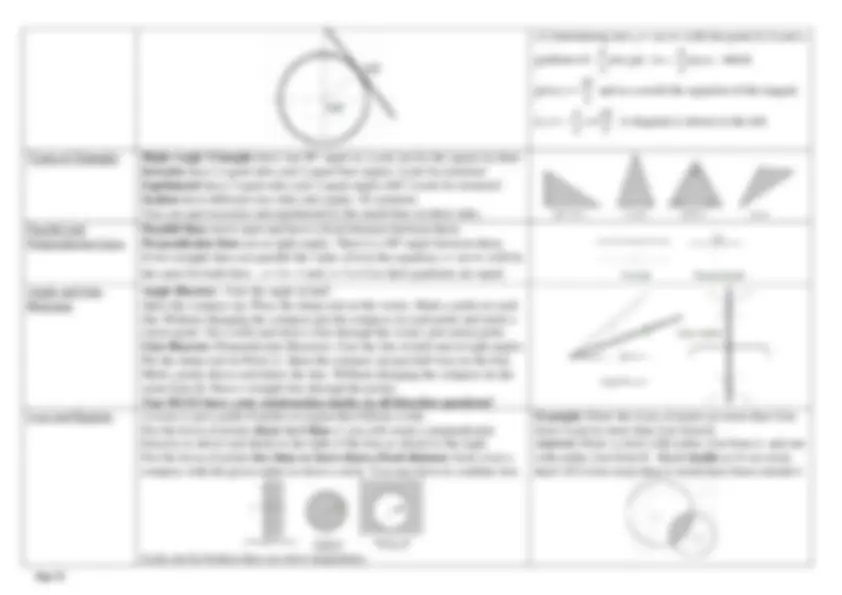
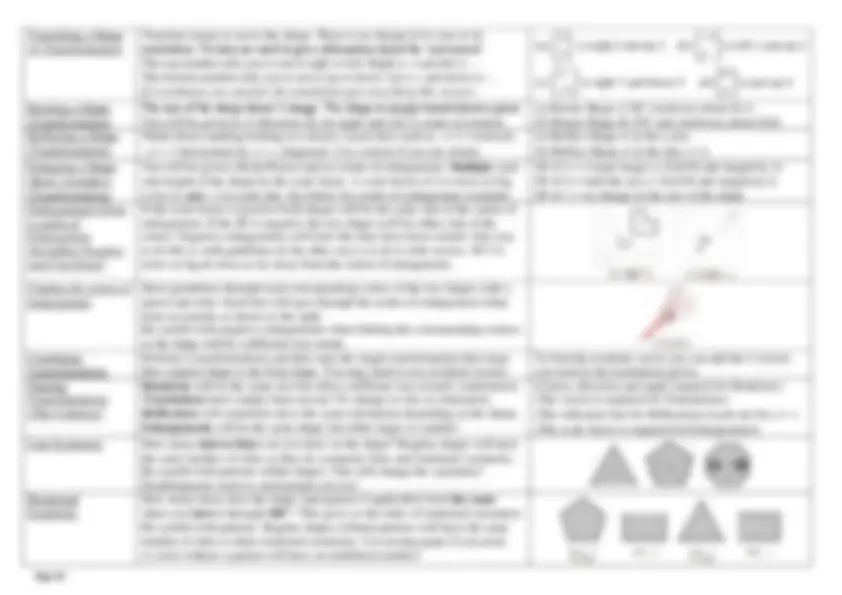
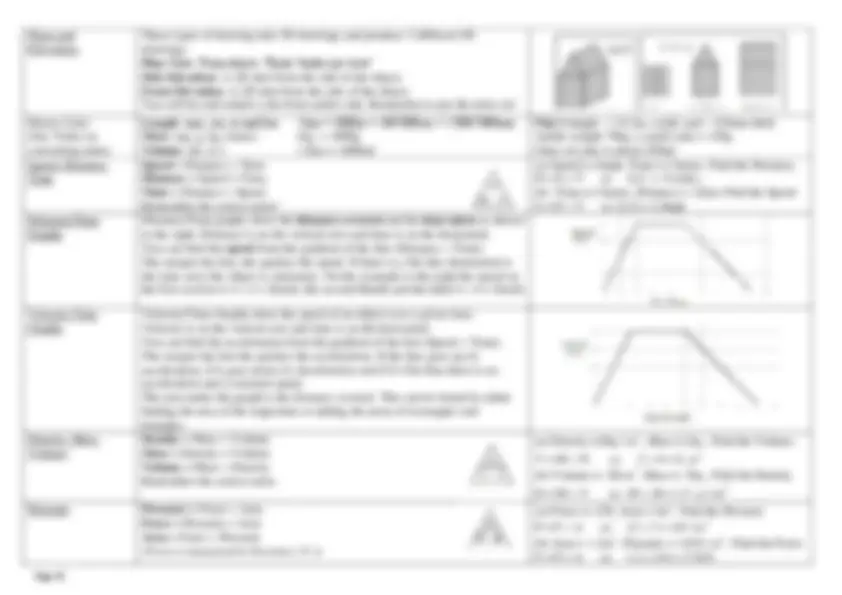
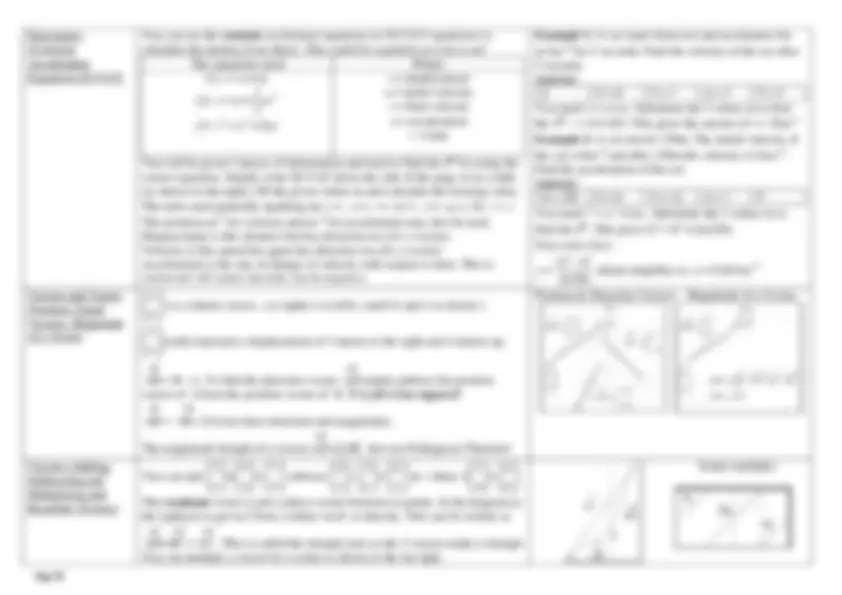
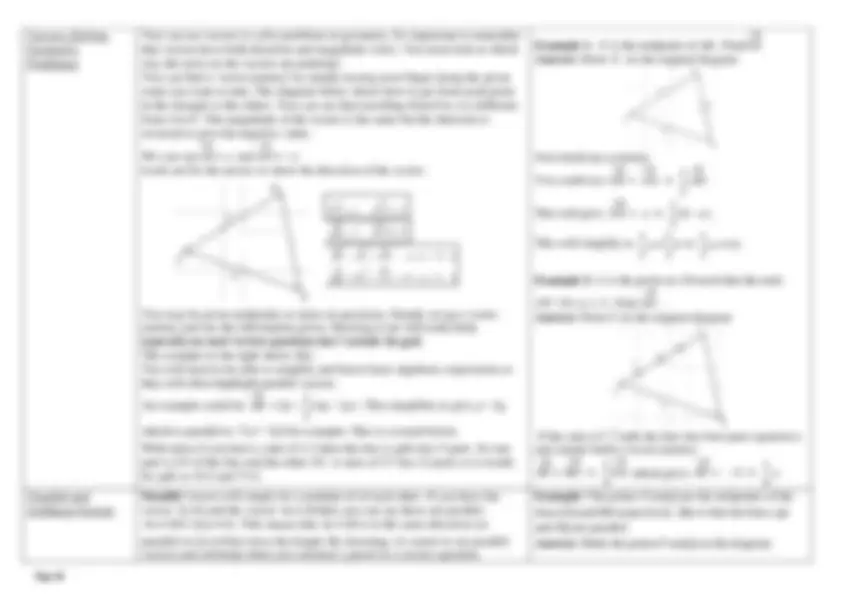
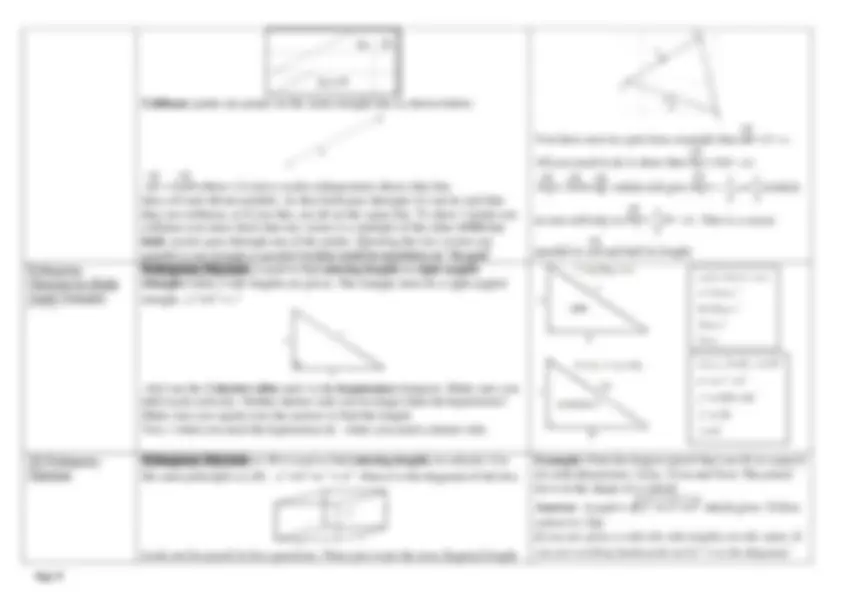
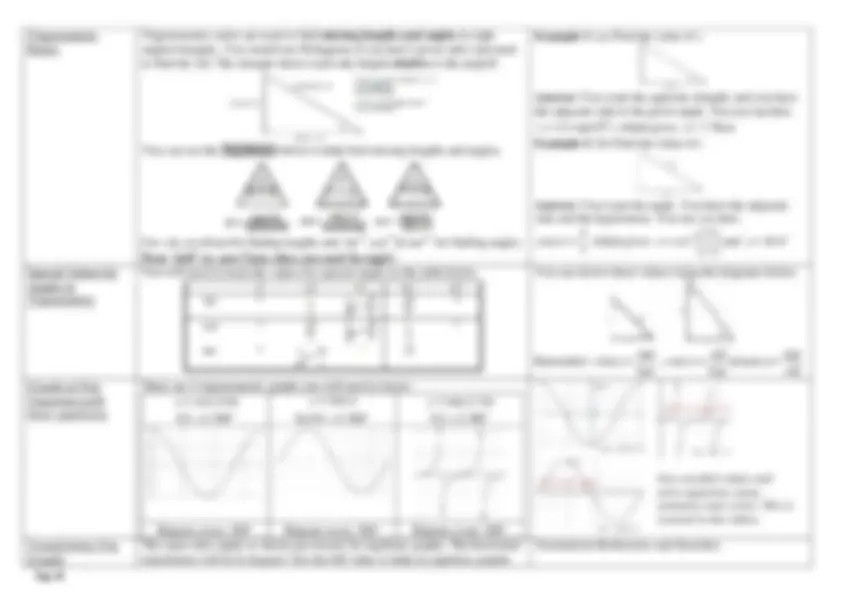
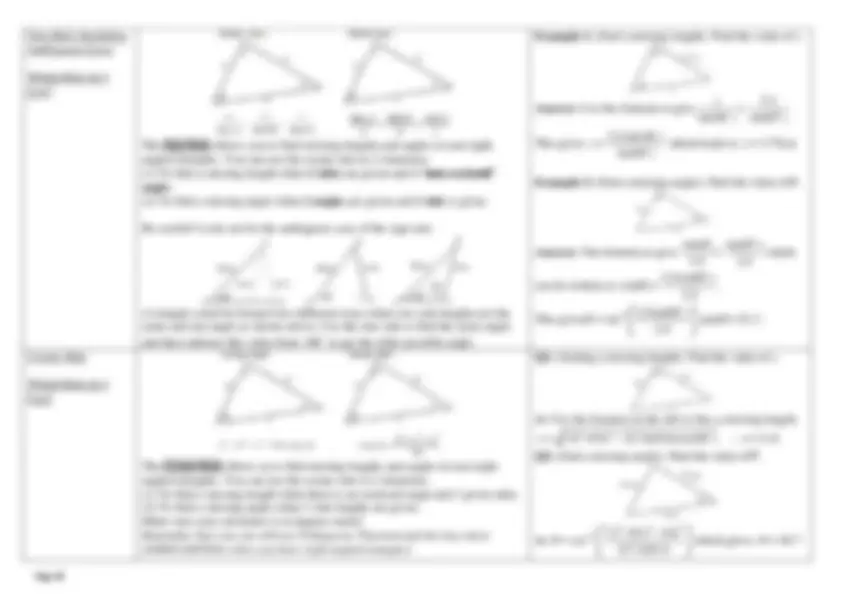




Study with the several resources on Docsity

Earn points by helping other students or get them with a premium plan


Prepare for your exams
Study with the several resources on Docsity

Earn points to download
Earn points by helping other students or get them with a premium plan
Community
Ask the community for help and clear up your study doubts
Discover the best universities in your country according to Docsity users
Free resources
Download our free guides on studying techniques, anxiety management strategies, and thesis advice from Docsity tutors
9-1 GCSE Maths Foundation &. Higher Help & Revision Booklet. Lite Version - September 2016 Click here for Full Version. Suitable for Edexcel, AQA & OCR.
Typology: Study notes
1 / 52

This page cannot be seen from the preview
Don't miss anything!













































Name_______________________________________ Class_________________ Target Grade 1 2 3 4 5 6 7 8 9
Steve Blades 2016-2017 ©
Page 1 - FREE lite version including full course and some videos – Visit www.m4ths.com for version with all videos – Produced by Steve Blades – Donations can be made through PayPal to steve@m4ths.com
Number Topic/Skill Tips/Facts Example Integers An integer is a whole number. It can be positive or negative. Integers: 2, 5,100, 6345…. Non Integers: ¼ , 12.3, 0. Square Number When you × a number by itself you get a square number. This number has to be an integer. Squaring a number is NOT the same as multiplying a number by 2.
The first 6 square numbers are: 1, 4, 9, 16, 25, 36... (a) 3² = 3 × 3 = 9 (NOT 6) (b) 5² = 5 × 5 = 25 Square Roots (^) This is the inverse (reverse process) of squaring a number. is used.
(a) 6² = 36 so √36 = 6 (b) 9² = 81 so √81 = 9. (a)^49 ^7 (b)^121 ^11 (c)
Cube Number/Roots (^) A number multiplied by itself three times. (The cube root 3 is the inverse). (a) 4³ = 4 × 4 × 4 = 64 (NOT 12) (b) 2³ = 8 (NOT 6)
A Prime Number A number that has only 2 factors, itself & 1. 2 is the only even prime number. 2, 3, 5, 7, 11, 13, 17, 19… (1 is not a prime number!) Rational and Irrational Numbers Rational numbers can be written in the form
a b
where a and b are integers and
Rational:
Reciprocal The reciprocal of a number is 1 divided by that number. Often it’s easier to think about turning the fraction upside down (inverting the fraction). The reciprocal of 5 is
The reciprocal of
is
Factors (Divisors) The integers (whole numbers) that go into a number with no remainder. Factors of 8 are 1,2,4 & 8 Factors of 12: 1,2,3,4,6 & Multiples Think Times Tables. Just write out the times tables for that number. The first six multiples of 4 are 4, 8, 12, 16, 20 and 24 Product of Prime Factors
Numbers can be made up by multiplying prime numbers. (2,3,5,7,11,13,17..) To find the Product of Primes start with a factor tree. (Shown to the right) Product means multiply so don’t forget to put the × sign in between the numbers you found in your factor tree. If you are struggling with the factor tree just keep trying to divide by the prime number in order. Does it divide by 2? If so pick 2. If it doesn’t divide by 2 does it divide by 3? By 5? By 7? By 11? Etc.
HCF (Highest Common Factor)
The HCF is the largest number that goes into 2 or more different numbers. Method 1 : Just list the factors of each and find largest number in each list Method 2 : Using Factor tree. Take only the prime numbers that appear in each list of the factors of the numbers to their lowest power and multiply. This method is better for less obvious examples and larger numbers. (You can use a Venn Diagram to do this too.)
Example: “Find the HCF of 8 and 28” Method 1 : Factors of 8: 1,2, 4 & 8 Factors of 28: 1,2, 4 ,7,14 & 28. The HCF of 8 and 28 is 4 Method 2: Product of Primes for 8 and 28: 8 23 and 28 22 7 so you only have 2 in both lists and you take it to the lowest power giving 22 4 LCM (Lowest Common Multiple)
The lowest (or smallest) number that 2 or more different numbers go in to. Method 1 : Just list out the times tables of each number and see which is the lowest number that appears in both lists. This is the LCM Method 2 : Using Factor tree. Take all the prime numbers that appear in each list of the factors to their highest power and multiply. (You can use a Venn Diagram to do this too.) Common misconception: The LCM of 2 numbers is 1. This is incorrect!
Example: “Find the LCM of 4 and 6” Method 1 : Multiples of 4: 4, 8, 12 , 16, .. Multiples of 6: 6, 12 , 18.. The LCM of 4 and 6 is 12. Method 2 : Product of Primes for 4 and 6: 4 22 and^6 ^2 ^3.^ You^ need both 2 and 3 to their highest power giving 22 3 12.
page 1
Finding a Fraction of a Quantity
‘Divide by the bottom, times by the top’. If you need 3/8 of a number, divide the number in the question by 8 then multiply the answer by 3. Alternatively, use a calculator. In maths ‘of’ means multiply so you can just type the calculation in as shown on the right. Just × the fraction by the quantity.
Example: “Find 2/5 of £60” Answer: Start with £60 ÷ 5 = £12. Now simply multiply by two. 2 × 12 = £24.
You could have simply done
instead to give 24
Adding Fractions Adding Mixed Numbers
You must have a common denominator to add fractions. When you do, simply add the numerators. Use equivalent fractions to find common denominators. Whatever you do to the bottom, do to the top! If you have forgotten! Numerator = top, Denominator = bottom.
(a)
(b)
(c)
(d)
Subtracting Fractions Subtracting Mixed Numbers
You must have a common denominator to subtract fractions. When you do, simply subtract the numerators. Use equivalent fractions to find common denominators. Please note: You can cross multiply when adding and subtracting fractions although it’s a long way round for some examples.
(a)
(b)
(c)
(d)
Multiplying Fractions
Multiply the numerators and multiply the denominators and simplify. You can cancel common factors at the start. You do not need a common denominator. (a)
(b)
(simplified)
Dividing Fractions Multiplying & Dividing Mixed Numbers
Invert (turn upside down) the 2nd^ fraction and multiply (as shown above). “Dividing by a fraction is the same as multiplying by its reciprocal” You do not need a common denominator unlike adding or subtracting. How many halves of pizza can you cut from a whole pizza? 1 ÷ ½ =2 of course!
(a)
(^) is the same as
(b)
is the same as
(simplified)
Finding 10%, 5%, 1% of a quantity
To find 10% without a calculator just divide the original number by 10, to find 1% divide it by 10 again. 5% is half of 10%, 2.5% is half of that!
£36: 10% = £3.60 5% = £1.80 and 1% = £0.36 or 36p From this you could get 11% = £3.96, 12%, 16% etc. Finding a Percentage of a Quantity using a Calculator
For harder examples just type it into a calculator. Remember, ‘of’ in maths means multiply. Percentage means out of 100 so you can just type the percentage in as a fraction over 100 and × by the quantity.
E: Find 23% of 327.5 A:
There is a % button on the Casio too. See the tutorial! Increase or Decrease by a %
Find the % required (see above) and add it on (increase) or take it off (decrease) If it’s a calculator question just multiply the quantity by the %
E: Increase £30 by 10% A: 10% = £3 so 30+3 = £ E: Decrease 20 by 40% A: 10% = 2,40% = 8, 20-8= Writing one Number as a % of Another
Write the 1st^ number over the 2nd^ as a fraction and × your answer by 100. It could help thinking as these like test scores. 7 as a % of 24 is 7/24 × 100. Example:^ Write 12 as a % of 31.^ A:
Percentage Change You are looking at the increase or decrease as a % of the original value. ‘Difference divided by the original and multiplied by 100.’ Example: A painting was bought for £200 & sold for £250. Find the % increase in its value.
Answer:
increase in value
Reverse Percentage
You are working out the value BEFORE the % increase or decrease. Use multipliers ( some shown), set up an equation & solve working backwards.
Do not just find the % of the value in the question and take it off or add it!
Example: A jumper was priced at £48.60 after a 10% reduction. Find its original price.
Answer:
(The jumper was £54)
Growth and Decay
Find the starting quantity, × this by the multiplier to increase or decrease the quantity and raise that to the required power. See worked example! The multiplier for growth will be greater than 1, for decay less than 1.
E: A bank pays 5% compound interest a year. Bob invests £3000. How much will he have after 7 years? Answer: 3000 1.05 7 4221.3012....(about £4221.30) Exponential Functions and their Graphs
Exponential graphs can be used to model growth and decay. Exponential graphs can be written in the form y ax. They are curves! If a 1 you get growth. If 0 a 1 you have decay. In ‘real life situations these graphs may be written as (^) y abx. An example could be the value of a car: (^) P 25000 0.92 t. This simply models the price of a car with a ‘new cost’ of £25000 which is losing 8% a year. An investment could be represented by I 4000 1.03 n. This just shows an initial investment of £4000 and a compound rate of 3% over n years.
Growth a 1 Decay 0 a 1
Simple and Compound Interest
Simple Interest : Interest calculated on ONLY the original investment. Compound Interest : Interest is calculated on BOTH the original investment and any interested gained over time. (This as interest on interest which is better) Be careful with two step calculations with different rates for different periods.
Example: Simple interest at 3% on £1000 over 4 years will give: 4 × £30 = £120. This gives a total investment of £1120. Compound Interest at 3% on £1000 over 4 years gives: 1000 1.03^4 = £1125. VAT VAT is just ‘Value Added Tax’ and is a tax added to some of the goods and services we buy. The current rate for VAT in the UK is 20% All you need to do is find 20% and add it on or just use the multiplier 1.2. Careful! If the price already includes tax divide by 1.2 to find the pre VAT cost
Example: A car is priced at £2000 before tax. Find the price after VAT has been applied at 20%: Answer: £20000 1.2 £24000(You can find 20% and add it on if you don’t want to use a multiplier) Negative Numbers (× and ÷)
If you are either multiplying or dividing with negative numbers and the signs are the same the answer is positive , if they are different the answer is negative.
(a) -2 × 4 = -8 (b) -3 × -5 = 15 (c) 3 ÷ -3 = -1 (d) -16 ÷ -4 = 4 Negative Numbers (+ and -)
Adding a negative decreases the value. Subtracting a negative increases the value. Start on a number line and either move up of down from your start point.
(a) 2 – 4 = -2 (b) 3 - - 5 = 8 (c) -2 + - 5 = -7 (d) -4 - - 5 = 1 BODMAS/BIDMAS (Order of Operations)
Brackets then Powers (BO/BI) comes first. Multiplication then Division (DM) comes next. Addition then Subtraction (AS) comes last.
(a) 3 + 4 × 2 = 11 (do the multiplication first) (b) 3 + (4+ 1)² Brackets: (5) ² = 25 and then add 3 = 28 (c) 12 ÷ 0.5 – 3 = 21 (division first!) Multiplying Decimals
Method 1: Count the total digits after the decimals at the start. The number you start with is the number you finish with. You may have to add 0’s. Method 2: Consider place value. Tenths × Tenths = Hundredths.
Example: 0.4 × 0.2 (2 digits after the decimals in total) 4 × 2 = 8 so my answer is 0.08 as I need to finish with 2 digits after the decimals. 0.3 × 0.15 = 0. Dividing by a Decimal
Simply multiply both numbers by powers of 10 until the decimal you are dividing by is an integer. At this point simply divide the numbers.
(a) 4 0.2 40 2 20 (b) 6 0.03 600 3 200 (c) 1.5 0.3 15 3 5 (d) 18 0.06 1800 6 300 Standard Form The number^ must^ be between 1 and9.
and multiplied by a power of ten.
(a) 8400 8.4 103 (b) 671000 6.71 10^5 (c) 0.00036 3.6 10 ^4 (d) 0.097 9.7 10 ^2
Calculating With Standard Form
When multiplying numbers in SF, multiply the numbers and add the powers. When dividing numbers in SF, divide the numbers and subtract the powers. Make sure your answer is in standard form. You may need to adjust at the end as shown in example (c) to the right. The initial answer is not in standard form.
(a) 1.2 (^103) (^) 4 (^10 6) 8.8 109 (b) 4.5 (^10 5) (^) 3 10 (^2) 1.5 103 (c) 4.1 10 (^6) (^) 3 10 (^9) 12.3 10 15 1.23 10^16
Ratio, Proportion and Rates of Change Simplifying Ratio Simplify them like fractions by dividing by common factors if it’s not obvious. (a) 5:10 is 1:2 in its simplest form (b) 14:21 is 2: Ratios in the form 1: n / n :
Divide both numbers in the ratio by one of numbers to leave one of them as 1. Be careful when it comes to which way round the answer must be! 1: n or n :1 5 : 7would^ be
as 1: n (÷ by 5) &
as n :1(÷ 7)
Ratio Sharing Add the total parts. A ratio of 4:2:1 has 7 parts ( not 3 parts as 4 + 2 + 1 = 7 ) Divide the amount to be shared to find the value of one part. Simply multiply this value by the each number in the ratio. Remember the units if applicable!
“Share £60 in a 3:2:1 ratio” 6 total parts. £60 divided by 6 = £10. Each part is worth £ 3 × £10 = £30 2 × £10 = £20 1 × £10 = £ Ratios Already Shared
Sometimes a ratio is already shared and you will need to work backwards. Simply find what one part is worth and then answers the questions given. The question will give you the clue to which quantity you are dividing. In these questions just think (for example) “3 parts is worth £12, so 1 part must be worth £4” and then use this information to answer the question.
Example: Money was shared in the ratio 3:2:5 between Ann, Bob and Cat. Given that Bob had £16, find out how much was shared. A: Bob has 2 parts. This means £16 = 2 parts. One part will be worth £8. There are 10 parts in total so 10×8 = £80. A total of £80 was shared. Ratios to Fractions Add the total parts in the ratio. This becomes the denominator of the fractions. Simply write each part over that denominator. You should now be able to convert to decimals too either by simplifying or pressing SD on the calculator.
Example: 2 : 3has 5 parts so this would be
and
Ratios to % Write the ratios as fractions (as shown above) and then convert them into % Example: 2 : 3would be 40% and 60% when shared Best Buys Find the unit cost by dividing the price by the quantity. The lowest number is the item that is the best buy. Be careful and don’t round the price too early!
8 cakes for £1.28= 16p each (this is the unit cost) 13 cakes for £2.05= 15.8p each (so pack of 13 is better) Basic Proportion Find out the value of one item by dividing and then multiply your answer by the number of them you need. Some of these are recipe type questions and others are just shopping type scenarios. Just find the cost, weight or size of 1 and then multiply up. Using the units given may help you understand more.
Example: 3 cakes require 450g of sugar to make. Find how much sugar 5 cakes require. Answer: 450 ÷ 3 = 150g per cake. Now multiply this by 5 to give 750g required for 5 cakes. Exchange Rates £1 = $1.6. Multiply by 1.6 to go from £ to $ & divide by 1.6 to go from $ to £ E: Convert £12 to $ A: 12 × 1.6 = $19. Direct and Inverse Proportion
Direct: y kx or y x (This just reads y is directly proportional to x .) With direct proportion k is multiplied by x to get y. As x increases, y increases. k is known as the constant of proportionality. It’s just a ‘fixed value’ multiplier.
Inverse: k y x
or
y x
(This just reads y is inversely proportional to x .)
With inverse proportion k is divided by x to get y. As x increases, y decreases. To solve problems involving direct and inverse proportion: (1) Pick the right equation (for either direct or inverse) and substitute the values given in the question to solve for k (the constant of proportionality) (2) Rewrite the equation with the correct value of k you have just found. (3) Substitute the 2nd^ given value in for x or y to find the required missing value. (Be careful with examples such as y is proportional to the square of x. This can be written as y kx^2 instead of y kx ). The root of x is written as x.
Example 1 : “ p is directly proportional to q. When p 12 , q 4. Find p when q 20 ”
Answer: 1 st^ solve for k : 12 (4) 3
p kq k k
now:
p q p p
Example 2: “ p is inversely proportional to q. When p 20 , q 10. Find p when q 4 ”
Answer: 1 st^ solve for k : 20 10 200
k p q k
k
now:
p q
p
p
Direct and Inverse Proportion Graphs
Graphs showing Direct Proportion can be written in the form y kxn where k is the constant of proportionality. The notation (^) y xn may be used and means exactly the same thing. Direct graphs will always have the point (0,0)on. The graph could be a straight line such as y 2 x or a curve such as y 3 x^2.
Graphs showing Inverse Proportion can be written in the form n k y x
where k is the constant of proportionality. The notation
y xn may be used.
These will not pass through the point (^) (0,0)& approach the x axis as x increases.
Direct Proportion Graphs Inverse Proportion Graphs
Algebra Terminology Expression: A collection of terms (letters (unknowns/variables) and possibly numbers (constants)) without an equals sign. You don't solve an expression! Equation: A collection of terms (letters/numbers) with an equals sign. You can look to solve an equation for values of the unknown term (letter). Identity: An equation that holds true for all values. The sign is often used. Formula: A set of symbols that expresses a rule. Inequality: When a two values are not equal ( ).
Expressions: 4 a 2 b , x^2^ 3 , 1 4 y , Equation: 4 a 2 b 1 Identity: 4 a 2 b 2(2 a b )
Inequality: x 4
Simplifying Expressions
Just collect the ‘like terms’. Be careful with negatives! x^2 and x are not like terms. 4 x 1 is not 5 x as 1 is not an x. It’s a known as a constant.
(a) 2 x 3 y 4 x 5 y 3 becomes 6 x 2 y 3 (b) 3 x 4 x^2 2 x 1 becomes 5 x x^2 3 Identities An identity holds true for any value you substitute in. What does that mean? 4 x 10 2(2 x 5) is an example. Substitute 2 in for x and each side will give
(a) 2 2 x 2 x 4 x 1 3 (b) x^2^ x 6 ( x 2)( x 3) x times x (^) Multiplying x by x gives x^2 and not 2 x. Check this with 3, 5, or 10 for example Squaring is multiplying by itself and not by 2. p p p (^) p p p is p^3 and not 3 p. 3 p means 3 p. This is a common error! 3 3 3 27 and not 9 5 5 5 125 and not 15 p p p This 3 p not p^3. Just use numbers to check! 2 + 2 + 2 = 6 and not 8 4 + 4 + 4 = 12 and not 64
Basic Powers (×&÷) (Rules of Indices)
am an am n^ and am an a m^ n
When multiplying with the same letter or number (base) just add the powers. When dividing with the same letter or number (base) just subtract the powers. Remember p p^1 and p^0^ 1. The base must be the same! a^4^ a a^5 BUT (^) a^6^ b^3^ ab^9 (The symbol means doesn’t equal)
(a) p^5^ p^3^ p^8 (b) p^7^ p^4 p^3 (c) p^12^ p p^13 (d) 2 a^5^ 3 a^3^ 6 a^8 (e) 48 y^5^ 16 y 3 y^4
(f)
6 4 2
m m m
(g) m n^2 m n^5 ^1 2 m n ^3 6^ 2 m n^4
The Zero Power (Rules of Indices)
a^0 1
A number raised to the power of zero is 1. An example could be 40 1 or x^0 1. Be careful with examples such as 3 y^0 this is not 1, it’s 3 1 3 as the zero power is only on the (^) y. Using the rule below though 0 (^3) y 1.
(a) 40 1 (b) x^0^ 1 (c)
0 xy 1 (d) xy^0 x N.B 00 is undefined! Can you think or explain why?
Factoring the Difference of Two Squares
An expression in the form a^2 b^2 you can factorise to give (^) a b (^) a b . If you look at the examples to the right, when you expand the double brackets the two middle terms cancel to just leave the first and last.
(a) x^2^ 25 (^) x (^5) x (^5) Each term is a squared term (b) 16 x^2 81 (^) 4 x (^9) 4 x (^9)
Completing the Square for Quadratic expressions (when a 1 ).
There are times when a quadratic expression can’t be factored. When a quadratic is in the form x^2 bx c you can write this in the form ( x p )^2 q
(The form ( x p )^2 q is found by evaluating
2 2
2 2
b b x c
This looks quite tough but it isn’t too bad! Just follow these 3 steps: (a) Have a set of brackets with x in and half the value of b in. (b) Square the bracket.
(c) Subtract
2
2
^ b
from c and tidy the expression.
After a few goes it becomes easier. Try and work with fractions as your work later on in maths will require you to do examples without a calculator. There are advantages to writing an expression in the form ( x p )^2 q. You can gather information about the maximum or minimum of a function and the axis of symmetry. The completed square form can also allow us to solve quadratic equations of the form ax^2^ bx c 0 when factoring is not possible.
Example 1: Complete the square for x^2^ 6 x 2 Answer: (a) (^) x (^3) (b) 2 x 3 (c) 2 x 3 9 2
which will tidy to give 2 x 3 7 Example 2: Complete the square for x^2^ 5 x 3 Answer:
(a)
(^) x
(b)
2 5 2
(^) x
(c)
2 5 25 3 2 4
(^) x
which will tidy to give
2 5 37 2 4
(^) x You can say that the minimum value of the expression
in part (a) would be -7 and
in (b).
We will look at this later on in more depth.
Completing the Square for Quadratic expressions (when a 1 ).
When a quadratic expression is in the form ax^2 bx c where a 1 you can complete the square and write it in the form p x ( q )^2 r. You can use a similar technique to that above but factor out a at the start. Here is an example: Complete the square for 2 x^2 12 x 4. You need to take the factor of 2 out of the first two terms: 2 x^2 6 x 4. At this stage you can complete the square
inside the square brackets to give: 2 (^ x 3)^2 9 4. You can now expand the square brackets to give 2( x 3) 2 18 4 which gives 2( x 3)^2 14. This method can be used when a is a negative number as shown to the right. You can only complete the square when the value of a is 1. In the first example you could graph the quadratic. This would open upwards (positive), have a minimum point at ( 1, 7)and the axis of symmetry would be the line x 1. In the second example the graph would open downwards (negative), have a
maximum point
and the axis of symmetry would be the line
x
Example 1 : Complete the square for 4 x^2 8 x 3 Answer: Factor the 4 out 4 x^2 2 x 3. At this stage complete the square inside the brackets to give 4 (^ x 1) 2 1 3 ^. Now expand the square brackets to give 4( x 1)^2 4 3. Finally tidy to 4( x 1)^2 7 Example 2 : Complete the square for x 2^ 5 x 1 Answer: Factor the -1 out to give x^2 5 x 1. Now
complete the square
2 5 25 1 2 4
x
. Expand the
square brackets
2 5 25 1 2 4
x
and tidy to give the
answer
2 5 21 2 4
^ x
Formulae (Writing)
You may be asked to write and use a formula given a scenario. Use terms (letters) to represent the unknown quantities such as C & N and numbers to represent the constants such as +5 shown to the right which is a fixed value.
Example: “Bob charges £3 per window and a £5 call out charge” Answer: C 3 N 5 with N being the number of windows cleaned and C the cost. Formulae (Substituting into)
Substitute the numbers given into the formula or expression. Swap letters for numbers. Be careful on the order. If x 3 and you need 2 x^2 square 3 first, then multiply by 2. There is a difference between 2 x^2 and 2 2 x. Be careful with negatives. Squaring makes it positive! Also, subtract a – means add it.
Example: a 3 , b 2 and c 5 Find: (i) 2 a which is just 2(3) = 6 (ii) 3 a 2 b so 3(3) – 2(2) = 5 (iii) b^2 5 which is (2)² - 5 = -
Formulae/Equations (Rearranging)
Changing the subject of an equation is like solving one without a ‘pretty’ answer at the end. Instead of your answer being a number, it’s usually an expression containing other terms (letters) and possibly numbers. Don’t panic; just apply the same rules as for solving. If you have a +, subtract this value from both sides. If you have a – then add it to both sides, a × then divide both sides by this quantity and a ÷ then multiply both sides by this quantity. What you do to one side, you just do to the other! If there are no + or – subtract signs then it will be × or ÷. Remember ut u t and not u t. Brackets means multiply too! It doesn’t matter if you have your subject on the right or the left hand side!
Example: Make x the subject of the equation 2 x 1 y z
2 x 1 y z
. Start by multiplying both sides by z to
give yz 2 x 1. Now add 1 to both sides so yz 1 2 x
and finally divide both sides by 2 to give
yz x
You now have x as the subject.
Solving Linear Equations Unknowns on one side Unknowns on both sides
Get the x ’s (unknowns or letters) on one side and the numbers on the other. Use the balance method. Simply do the opposite operation to what the equation gives until you have only x ’s on one side and only numbers on other. If you have a +, subtract this value from both sides. If you have a – then add it to both sides, a × then divide both sides by this quantity and a ÷ then multiply both sides by this quantity. What you do to one side, you just do to the other!
(a)
x x x
(b)
p p p p p
(c)
y
y
y
Setting Up and Solving Linear Equations
Find an expression for each piece of information given in the question, add them together, and simplify the expression. This will then be set equal to a value given in the question (or implied) to give you your equation. Solve the equation and then make sure you answer the original question in context!
E: Bob is n years old. Fred is twice his age & Sue is one year your than Bob. Their total age is 39. Set up and solve an equation to find the age of Bob. A: n 2 n n 1 39 this gives 4 n 1 39 and n 10 Equations with Fractions
You can think of this a couple of different ways: (1) Multiplying through by the LCM to ‘clear’ the fractions. (2) Cross multiplying to ‘clear’ the fractions.
Example 1: (Multiplying by the LCM). Solve the equation:
x x
Answer: Multiply both sides of the equation by 12 (which is the LCM) to leave: 4 x 48 24 9 x. At this stage you add 9 x and subtract 48 to both sides of the equation. You can now solve to get 13 x 24 and
x
The section later on algebraic fractions will help for harder examples
Example 2 (Cross Multiplying)
Solve the equation:
x x
Answer: Cross Multiplying to get: 5( x 1) 4 x. Expanding to get 5 x 5 4 x which gives x 1.
Use either or both methods to solve equations with fractions. It’s often a case of being flexible and seeing which method is quickest.
Solving Quadratics (Using the formula)
When a quadratic equation is in the form ax^2 bx c 0 the solutions can be
found using the quadratic equation
b b ac x a
You would use the formula if the equation doesn’t factor or you can’t factor it easily. Be careful with the signs on (^) a b , & (^) c and make sure you obtain the + and
for x and just substitute the values in to give
b b a c a
Example: Solve the equation 3 x^2 x 5 0 Answer: (^) a 3, b 1 and c 5
Substitute in to give
x
The + answer will be
x
or 1.14 to 2 dp.
x
or -1.47 to 2dp
Solving Quadratics (Completing the Square)
When a quadratic equation won't factor, you have two obvious choices when it comes to solving the equation. The first is using the formula (as shown above) and the 2nd^ is using the completed square form. When a quadratic is in the form ax^2^ bx c 0 you can write this in the form ( x p )^2 q 0 by completing the square (as shown previously). For there to be real solutions q 0. Before you use this method check you can't factor it as that would be easier most of the time! Using the example given previously BUT as an equation set = 0 let's find the roots (solutions) to the equation x^2^ 6 x 2 0 Here are the steps (i) x 3 (ii) 2 x 3 (iii) 2 x 3 9 2 which will tidy to give 2 x 3 7 0. This is where we got up to before!
Now (iv) add 7 to both sides of the equation to give 2 x 3 7. At this stage square root both sides to give (v) x 3 7. Finally add 3 to both sides to give the 'exact answer' of x 3 7. Exact means in surd form. Remember you will have two solutions x 3 7 and x 3 7 (or 0.35 and 5.65 to 2 d.p)
Example 1: Solve the equation x^2 4 x 1 0 Answer: Start by completing the square: ( x 4)^2 16 1 0. At this stage you can write ( x 4)^2 15 followed by x 4 15. Simply subtracting the 4 from both sides gives us our exact answer of x 4 15 Example 2: Solve the equation x^2 7 x 2 0 Answer: Start by completing the square: 2 7 49 2 0 2 4
x
which will now give
2 7 53 2 4
(^) x
which in turn gives
x
and further
x & tidying gives
x
Equation of a Circle (and its graph)
The equation of a circle with its centre at the origin (0, 0) and a radius length (^) r can be written as x^2^ y^2 r^2. Don’t panic, this is not much harder than using Pythagoras Theorem. Often you will be asked to draw one. If so just use a compass and have your centre at the origin. x^2^ y^2 16 is shown to the right and passes through (4,0) (0,4) (-4,0) & (0,-4) x^2^ y^2 25 would have radius 5 and pass through (5,0) (0,5) (-5,0) & (0,-5) A common error is not square rooting the radius when asked for its length! If you are given a diagram and asked for the equation, simply pick a point and substitute the x and y coordinates into x^2^ y^2 r^2 to find the value of r^2 (or r ).
Example: x^2^ y^2 16 is a circle with a radius of 4. Answer: Use a compass set 4 units apart!
Linear and non Linear Simultaneous Equations (Solving Algebraically)
A linear equation can be represented by a line. A non-liner by a curve or circle (for example). One of your equations can be written in the form ‘Elimination’ by subtraction is often not possible so the method of substitution is used for most examples. The general rule is to make either x or y the subject of the linear equation and substitute into the non-linear equation. Once you have solved the new non-linear equation for one unknown ( x or y ) then substitute the answer(s) back into the linear equation to find the other. Remember to solve for both x and y! Your solutions may have to be given as coordinates as they will be the points where 2 graphs meet. The 2 graphs of the example to the right is shown below in figure 3. Figure 1 is a line & reciprocal, 2 a line & circle
Example: Solve the simultaneous equations y x 4 and x^2^ y 16. Answer: You can rewrite the 1st^ equation as y x 4. Now substitute this into the second equation to eliminate (^) y to give x^2^ x 4 16. This can be written as x^2^ x 12 0 which factors to ( x 4)( x 3) 0 and gives^ x^ ^4 or^ x^ ^3. You now have to solve for y. Substitute the two values of x back into the linear ( y x 4 ) to solve for y. When x 4 , y 4 4 which gives y 0. When x 3 , (^) y 3 4 which gives (^) y 7. You have 2 solutions for x and 2 solutions for y. If these were points of intersection of two graphs the coordinates would be ( 4,0) and (3,7).
Solving Equations by iterative methods
There will be times when it's hard to solve an equation using the techniques you have learned or could learn in maths. The equation x cos( ) x is an example. In such cases you could use an iterative formula to solve the equation to a certain degree of accuracy. If you have a function f( ) x 0 you can rearrange this to give x g( ) x. This is just a new function of x using the original terms from f( ) x 0 This equation can then be used to set up the iterative formula. This can be written as xn (^) 1 g( xn ). This forms a sequence for values to be substituted into. You will be given a value of x 0 (starting value for the first approximation of a solution to the equation f( ) x 0 ) and it's simply a case of setting up the iterative formula on the calculator and finding values of x 1 (^) , x 2 (^) , x 3 and so on to locate a root. You will be given a level of accuracy to aim for or a number of iterations to produce. All that is happening is the first value ( x 0 ) goes into the right hand side of the equation to produce a value of x on the left hand side. This value ( x 1 ) is then taken and substituted into the right hand side again to produce a second value of x ( x 2 ). This process continues until the sequence converges (tends to/ approaches) to a limit. This limit will represent the solution of the equation. Not all rearrangements will yield the answer you want! Be flexible when it comes to forming x g( ) x. Some sequences may diverge!
Example: Use an iterative formula to find the positive root of the equation x^2^ 3 x 6 0 to 3 decimal places. Answer: Set up an iterative formula by making x the subject of the equation x^2^ 3 x 6 0. (^2 3 )
3 6 3 6
x x x x x x
Start with x 0 (^) 4. At this stage type in 4 ad press = on your calculator. To find x 1 type in 3Ans 6. This will give x 1 (^) 4.242640.. To find the next value x 2 , press = again. This gives x 2 (^) 4.327576.. , press = again for x 3 which gives x 3 (^) 4.356917..repeat to get x 5 (^) 4.37047.. for x 4 giving x 4 (^) 4.367007.., x 5 (^) 4.37047.. , x 6 (^) 4.3716604.. x 7 (^) 4.372068.. x 8 (^) 4.372208... At this stage both x 7 and x 8 round to 4.372. This means the iterative formula is converging to 4.372 to 3 decimal places.
The Gradient of a Line
The gradient of a line is how steep the line is. The greater the number (+ or -) , the steeper the line. To find the gradient of a line divide the total distance up or down by the total distance left or right. Up is + and down is -. Right is + and left is -. You may be able count squares and divide as shown to the right. The gradient can be positive (sloping upwards left to right) or negative (sloping downwards from left to right). Without a graph you could use the formula. 1 2 1 2
y y m x x
The gradient ( m ) of the line passing through (1,2) and (11,6)
would be
m
. This goes up 2 units for every 5 to the right.
Find the equation of a straight line given a point and a gradient.
A straight line can be written in the form y mx c where m is the gradient and c is the point where the line crosses the y axis ( c is known as the constant). To find the equation of a straight line given a point the line passes through and the gradient of the line you simply substitute the values of x , y and m into the equation y mx c. To find the value of c. Once you have the value of c simply put the equation ‘back together’ in the form y mx c. You may need to do this from a graph. Just find the gradient of the line and a point it passes through.
Example: Find the equation of the line with gradient 4 passing through the point (2,7). Answer: In this example m 4 and you need to find the value of c. Simply substitute the given values in to solve for c. y mx c which gives (^7) 2(4) c. This gives c 1. The equation of the line is therefore y 4 x 1
Finding the equation of a straight line given two points
If you have two points (or two sets of coordinates) then you can find the equation of the straight line passing through them. To find the equation of a straight line all you only ever need is the gradient and one point the line passes through (as shown in the example above). To find the gradient use the method shown above taking the two points you have for x 1 (^) , y 1 and x 2 (^) , y 2. In the example to the right x 1 (^) 6 and y 1 (^) 11. x 2 (^) 2 and y 2 (^) 3. Once you have the gradient, pick one of the points you have (you can choose either) and simply substitute into y mx c as shown in the previous section.
Example: Find the equation of the line passing through the points (6,11)and (2,3).
Answer: First find the gradient:
m
At this stage pick either one of the points the line goes through and substitute into y^ ^ mx^ c to give: 11 2(3) c. You can see c 5 giving us the equation y 2 x 5.
Parallel and Perpendicular Lines
If two lines are parallel they will both have the same gradient. The two lines will never meet and stay a fixed distance apart. The value of m (the gradient) will be the same for both lines. If two lines are perpendicular they will be at right angles to one another. The product (×) of their gradients will always = -1 (or, if you like, the gradient of one line ( m 1 ) is the negative reciprocal of the gradient of the other line ( m 2 )). This could be written as m 1 (^) m 2 1 ifs the lines are perpendicular OR if a line
has gradient m , the line perpendicular to it will have gradient
m
. Once you
have found the gradient of the line parallel or perpendicular to the original line,
Example 1: Find the equation of a line parallel to the line (^) y 3 x 2 which passes through the point (^) (1,9). Answer: The gradient will be the same giving m 3. Now substitute into y mx c to give 9 3(1) c. This means c 6 & the equation of the line y 3 x 6. Example 2: Find the equation of a line perpendicular to the line y 3 x 2 which passes through the point (6,5)^.
Answer: The gradient will be
simply substitute the values of x , y and m into the equation of a straight line y mx c to find its equation. (This method is shown previously) Not all equations will be in the form y mx c. For example, the line y 2 x 3 is parallel to the line 4 y 8 x 9 0. Their gradients are the same.
Now substitute into y mx c to give
c
This means c 7 & the equation of the line
y
Graph Recognition Linear: A straight line graph which can be written in the form y mx c
Quadratic: A parabola which is a sweeping curve in the form y ax^2 bx c Cubic: A sweeping curve in the form y ax^3^ bx^2 cx d
Reciprocal: A curve in the form
a y x
Quadratic Graphs (Plotting from a Table)
This will be a parabola which is a sweeping curve & NOT a collection of lines. Simply Fill out the table (same as linear graphs). Be careful with negatives. Squaring a negative makes it positive! Subtracting a negative will mean adding! y x^2^ 3 x 1 x -2 -1 0 1 2 3 4 5 y 11 6 1 -1 -1 1 6 11
Sketching Quadratic Graphs from an equation (Maximum, Minimum & Turning Points)
You may be asked to sketch a quadratic graph from its equation instead of plotting one from a table of values. This is a more complex skill. A quadratic equation can be written in the form y ax^2 bx c. The graph is called a parabola and is a curve with either a max or min turning point. The graph will cross the x axis when y 0 and cross the y axis when x 0. Positive Quadratic Graphs If a 0 the graph will have a minimum
Negative Quadratic Graphs If a 0 the graph will have a maximum
In the Factored Form y ( x p )( x q ): You can get the shape, find the roots (solutions) and find the y intercept easily. In Completed Square Form y ( x p )^2 q You can get the shape, find the roots (solutions) and find the y intercept easily. You can also find the maximum/minimum turning point & the axis of symmetry (More information on each technique is given in previous sections)
Example 1: Sketch the graph of y x^2 x 6 showing any points of intersection with the coordinate axis. Answer: Factor to give y ( x 3)( x 2). Roots: x 3 , x 2 y intercept:(0, 6)
Example 2: Sketch the graph of y x^2^ 6 x 2 stating the coordinates of the turning point, the equation of the axis of symmetry and the roots of the equation. Answer: In completed square form y ( x 3)^2 7. Minimum point:(3, 7) Axis of symmetry: x 3 Roots: x 3 7 y^ intercept:(0, 2)
Asymptotes An asymptote will appear as a straight line on a graph. This broken line denotes the value(s) that the graph can never take. The asymptotes may be horizontal or vertical and the curve will approach this line but never meet or cross it.
If you look at the graph
y x
for positive values of x , the lines
x 0 (the y axis) and y 0 (the x axis) are asymptotes. As the value of x gets very large the graph will tend to 0 but never actually be zero. 1 divided by a large number is very small but will never ‘disappear’ As the value of x gets very small (tends to 0), the value of y becomes very large
& eventually is undefined.
is undefined. 1/1 = 1, 1/0.1 = 10, 1/0.01 = 100 etc
Example: Draw the asymptotes on the graph
of
y x
shown below.
Answer: The broken lines show the lines x 0 & y 0
Inequalities
x 2 “ x is greater than 2” This just means the number must be bigger than 2 x 3 “ x is less than 3” This just means the number must be smaller than 3 x 1 “ x is 1 or greater” This means the number can be equal to 1 or bigger x 6 “ x is 6 or less” This means the number can be equal to 6 or smaller 3 x 2 " x is greater than -3 yet in turn equal to or less than 2" (-2,-1,0,1,2)
(a) State 3 integers that satisfy x 4 You could have (for example) 5, 9 & 73. (it can’t be 4) (b) State 3 numbers that satisfy x 3. 3, 2.4, -1.7 etc (c) State 3 integers that satisfy 2 x 4 You could have (for example) -1, 3 & 4. (it can’t be -2) Set Notation for Solution Sets (Inequalities)
You can use set notation to represent inequalities as shown below. You could represent 3 x 2 as x : 3 x (^2) You could represent x 5 or x 5 as x^ :^ x^ ^5 ^ ^ x^ :^ x ^5
= The set of values x = For x : = such that The union (and/or or both)
Solving Linear Inequalities
Use the same technique as you would for linear equations. Be careful! If × or ÷ the inequality by a negative number the inequality sign changes direction.
E: Solve 2 x 1 7. A: Add 1 to each side 2 x 8. Divide by sides by 2 to give the final answer x 4 Shading Regions (Linear Inequalities)
Shading inequalities allows us to find a ‘region’ (or set of points) that satisfy one or more linear inequalities (or constraints) given. An example might be to shade the region that satisfies both x 5 and y 4. All you need to do is draw the line of each equation given as decide which side of the line to shade. If a strict inequality is used (for example x 2 ) then you must draw a broken line. For examples such as x 6 where 6 is included you must draw a solid line. Generally you will shade the region you want as the shaded area & label it ‘R’ You can use the method shown to the right and shade at the end. If you find it easier you can shade as you go. Different colours may help! The tricky thing is to shade the right region. For example, if you wanted to use the question to the right and you didn’t know whether to shade above or below the line y 2 x you could test the point (0,3)for example. Is 3 greater than 2 lots of 0?, yes it is. That means (0,3)satisfies the inequality. This point is above the line so you would shade that area. When it comes to horizontal line ( y 1 etc)
Shade the region that satisfies y 2 , x x 1 and y 3.
Draw the line y 2 x using a broken line.
Now add the line x 1 using a broken line.
Finally add the line y 3 using a solid line.
Once you have done this decide where to shade. The shading will be to the right of the line x 1 ,below the line (^) y 3 and above the line y 2 x. If you are unsure
shading above the line is greater than and below the line is less than. For vertical lines ( x 2 etc) the area to the right is greater than and the area to the left is less than. When you have finished the part of the question on shading you may be asked to state/find all or some of the integer points that satisfy the inequalities. All you have to do is pick integer coordinates either inside the shaded region or on the solid lines enclosing it. Do not include the coordinates on any broken lines. Do not leave these questions out just because you don’t understand the equations of the straight lines! Draw a table of values, plot the points and draw a straight line through them. The technique is shown in the section on drawing straight line graphs.
just test a point to check that it satisfies all 3 inequalities. This will give the final region shown below.
Quadratic Inequalities
A quadratic inequality could be written in the form ax^2^ bx c 0. In order to find the set of points (or region) that satisfy the inequality you can factor the quadratic expression to find the critical values. The method of factoring used is the same as shown previously. Once you have factored the expression you will have the critical values. At this stage draw a little sketch of a parabola with the critical values and shade the required regions. If the expression is / 0 shade above the x axis (that’s the line y 0 ). If the expression is / 0 then shade below the x axis. Be careful with the final notation used for inequalities Here are some examples below and a worked solution to the right:
(a) (b)
Example: Solve the inequality x^2^ x 12 0 Answer: Factor the quadratic to give( x 3)( x 4) 0 This gives us the critical values of x 3 and x 4 Draw a sketch with these values:
The required region is below the x axis
The final answer is 3 x 4. (3 & 4 are excluded)
Graph Transformations (Translations)
If the graph of a function is translated it is simply moved. The graph doesn’t change shape, ‘size’ or orientation (which was around it is). If you start with the graph of y f( ) x you can translate horizontally (left and right or in the x direction) or vertically (up and down or in the y direction).
Horizontal Translations: y f( x a )moves a units to the left. In vector form
this would be a translation of 0
^ a
. So, f( x 3)moves right by 3
and f( x 1)moves right by 1.
Example: The graph below shows part of the curve y f( ) x
Sketch the graphs of: (a) y f( x 1) (b) f( ) x 2 (c) y f( x 3) 1 Answer: (next page)